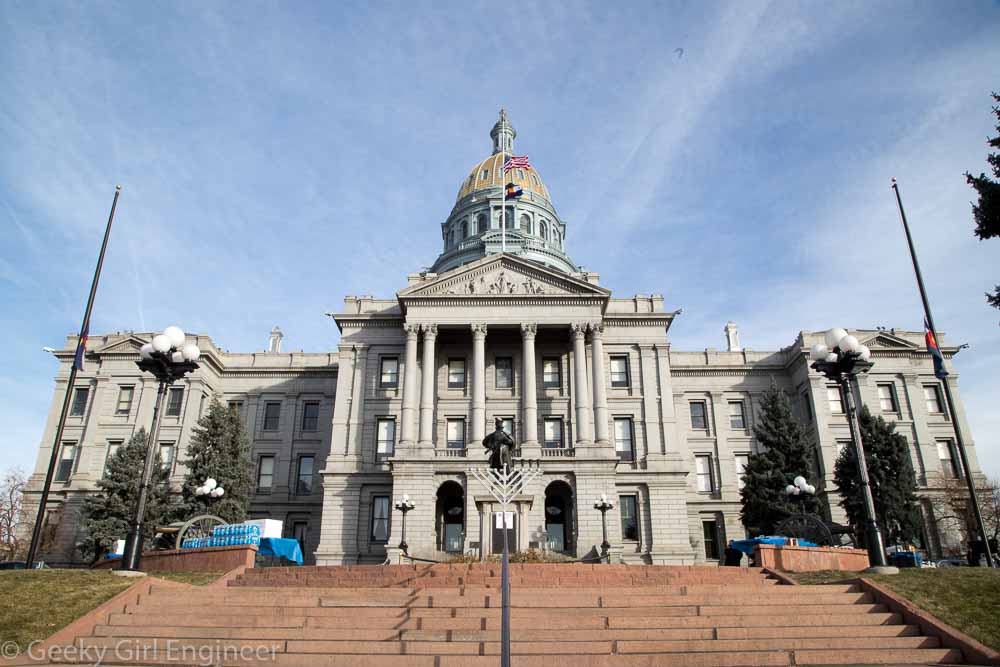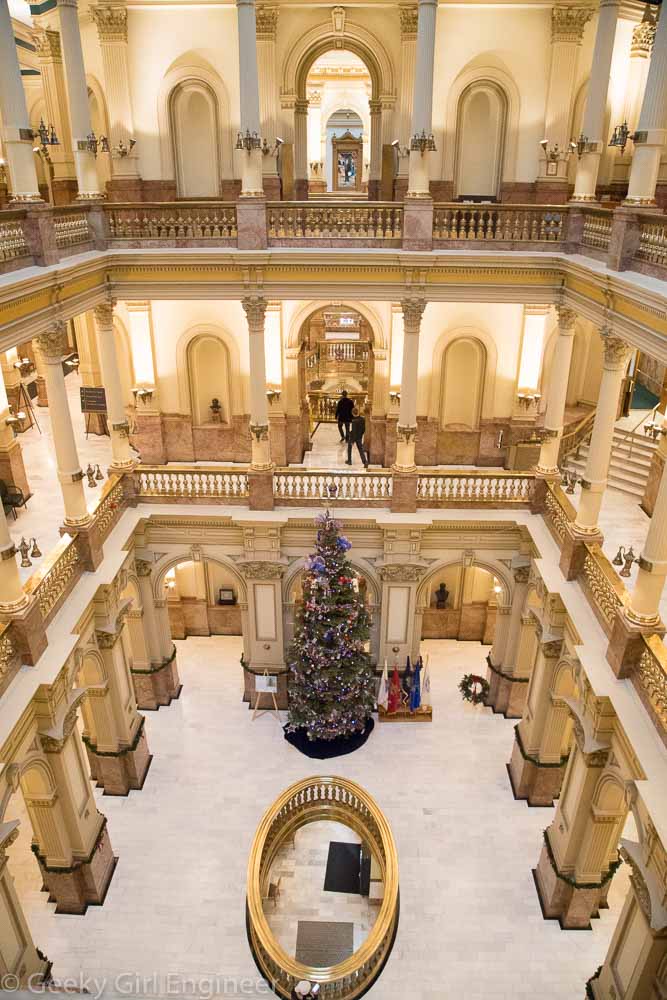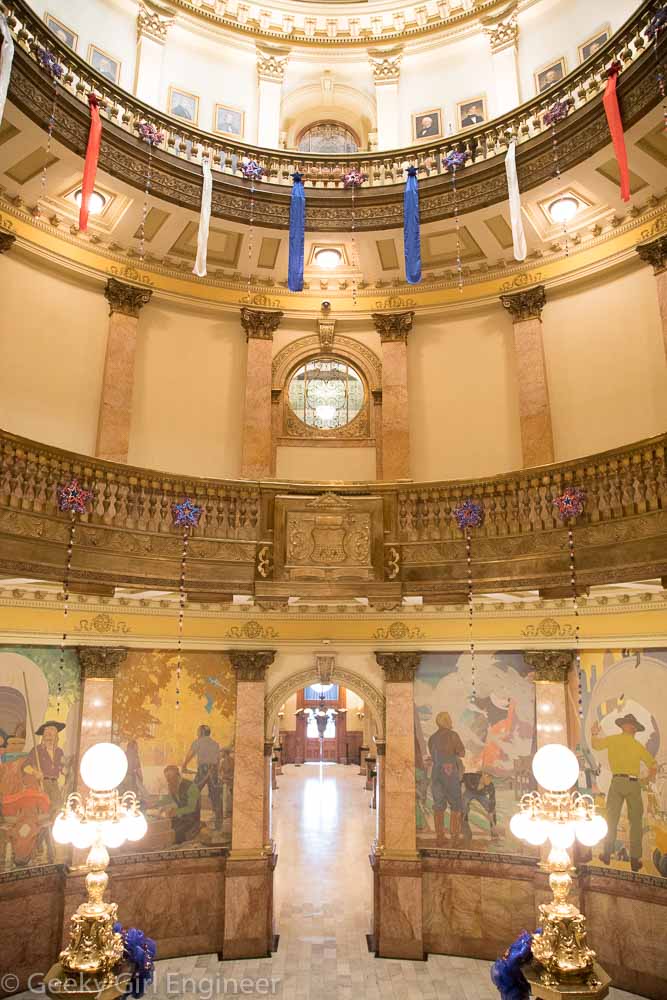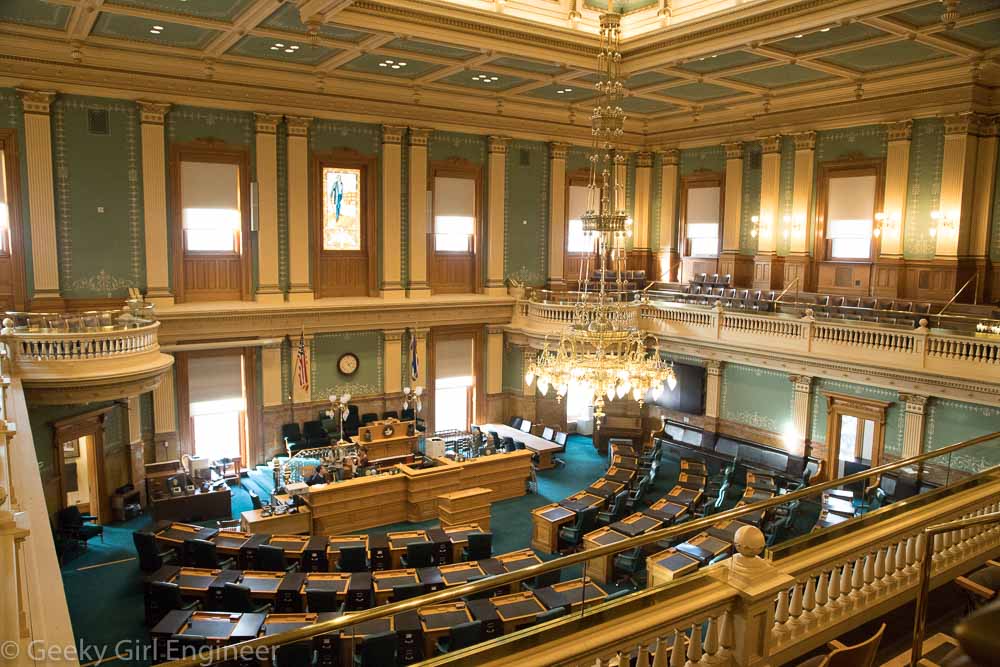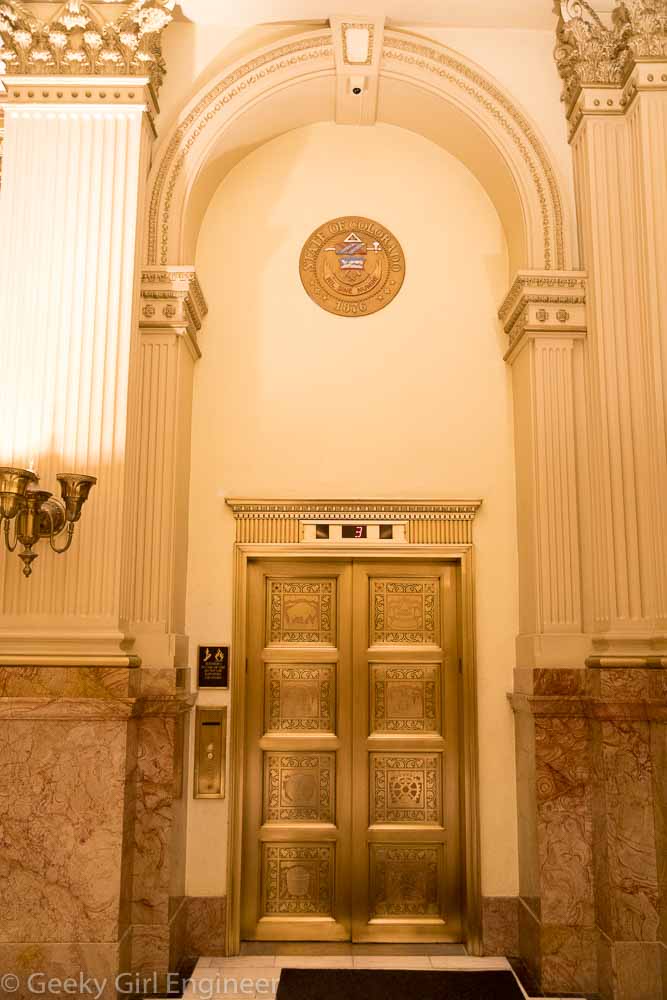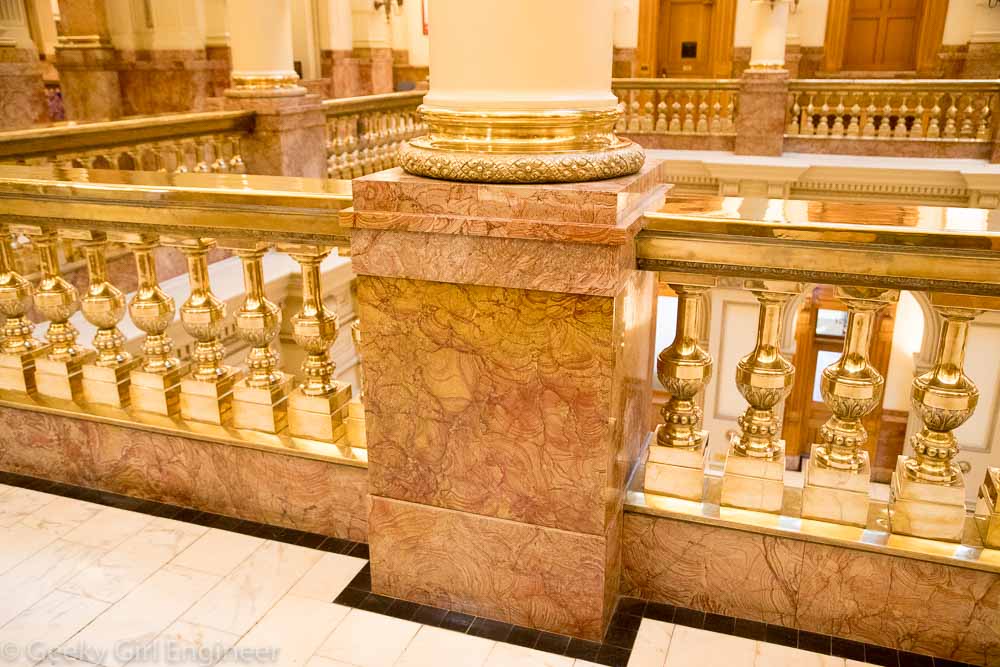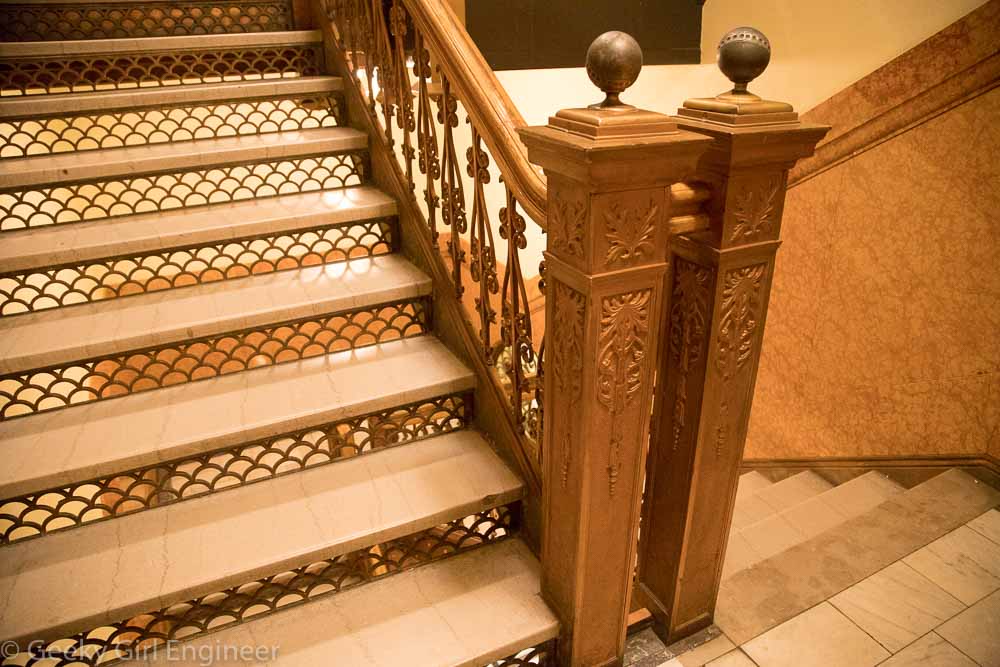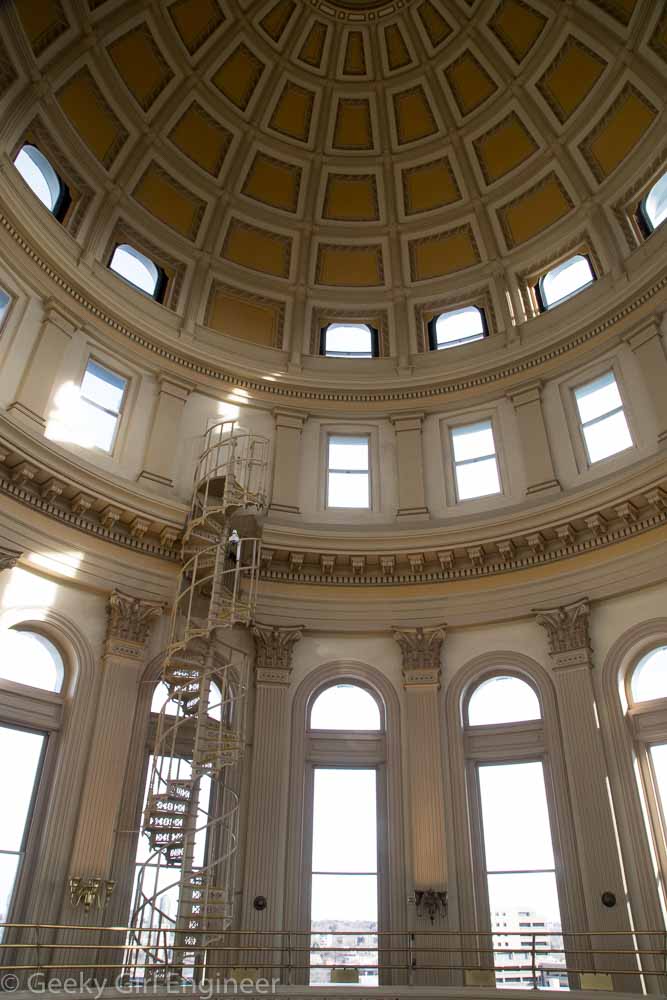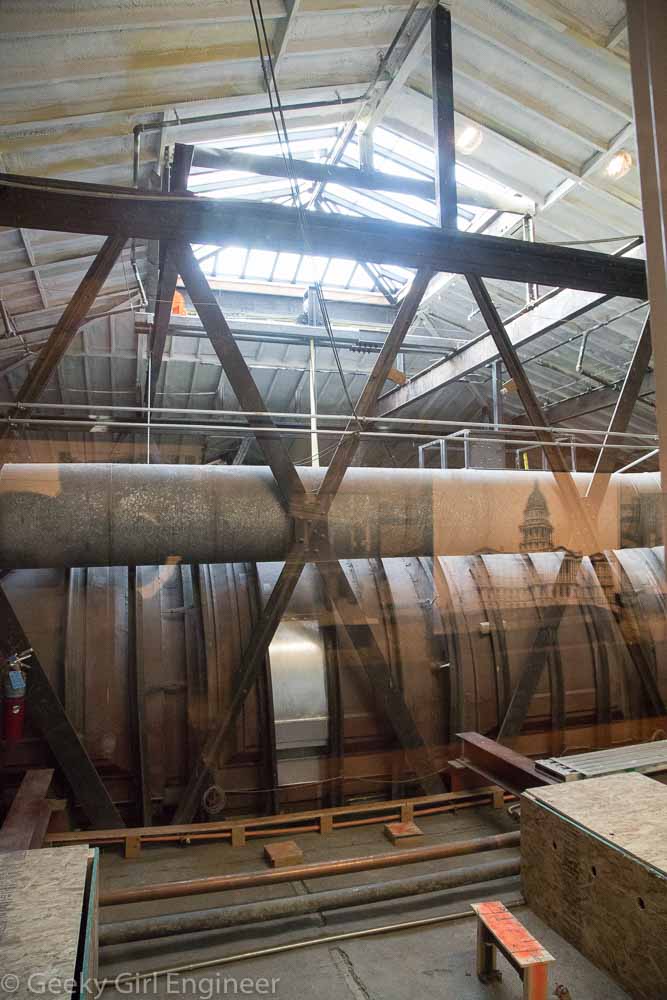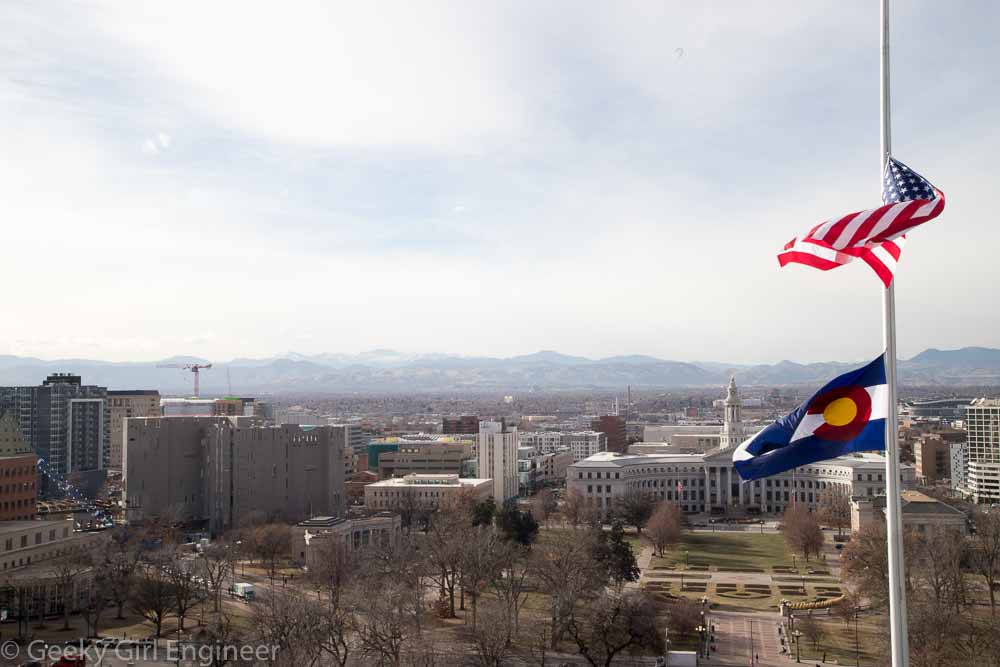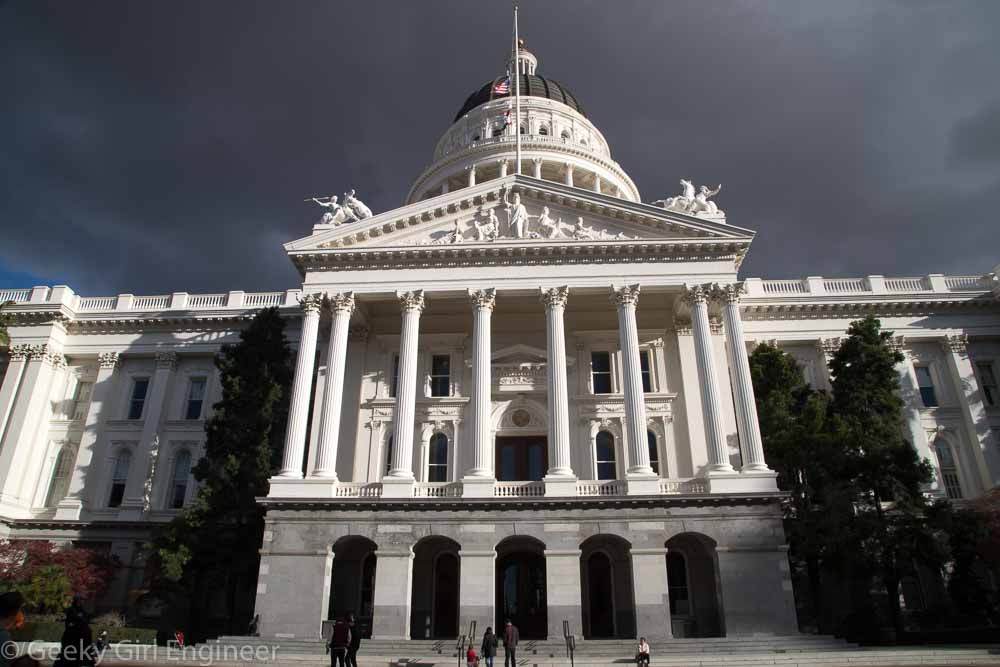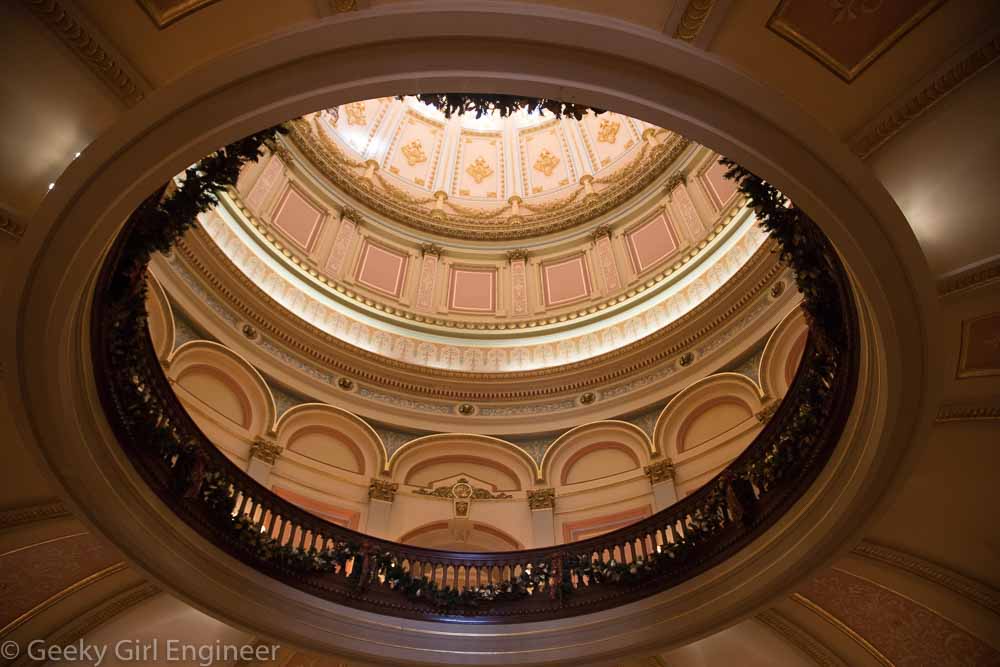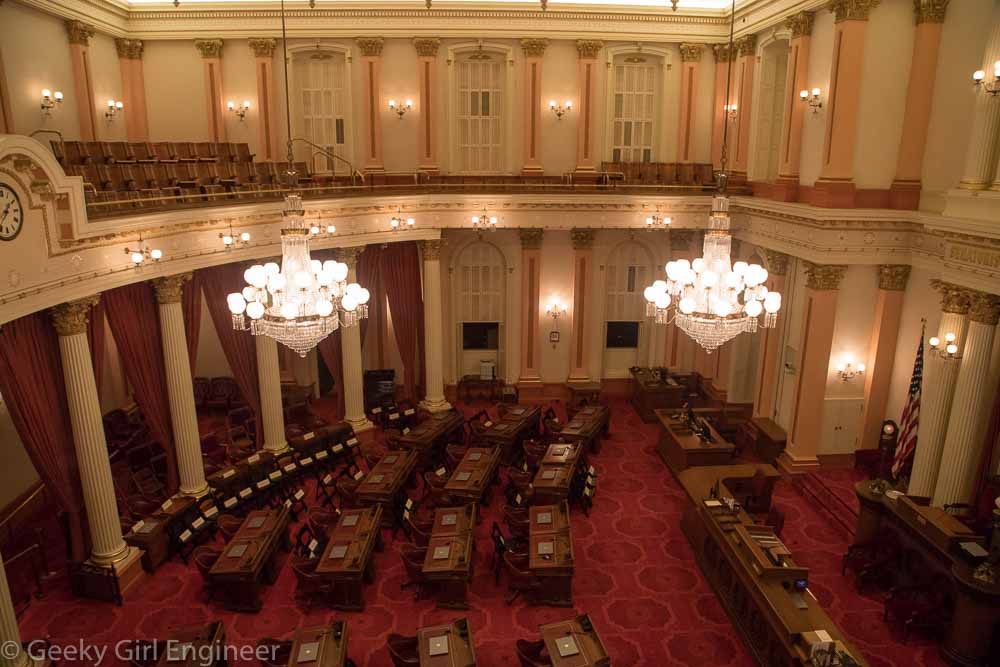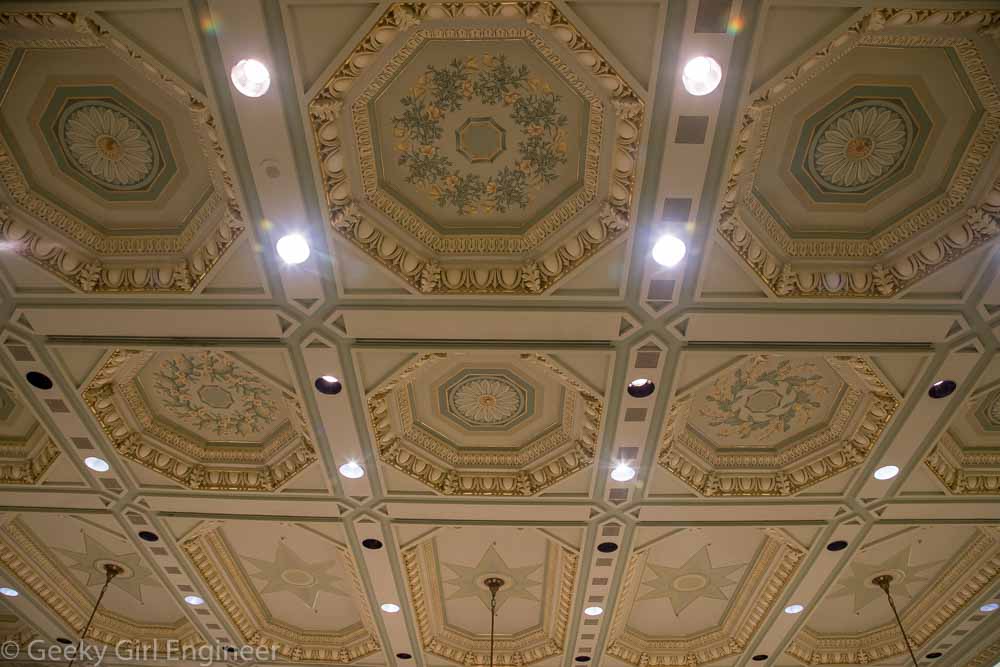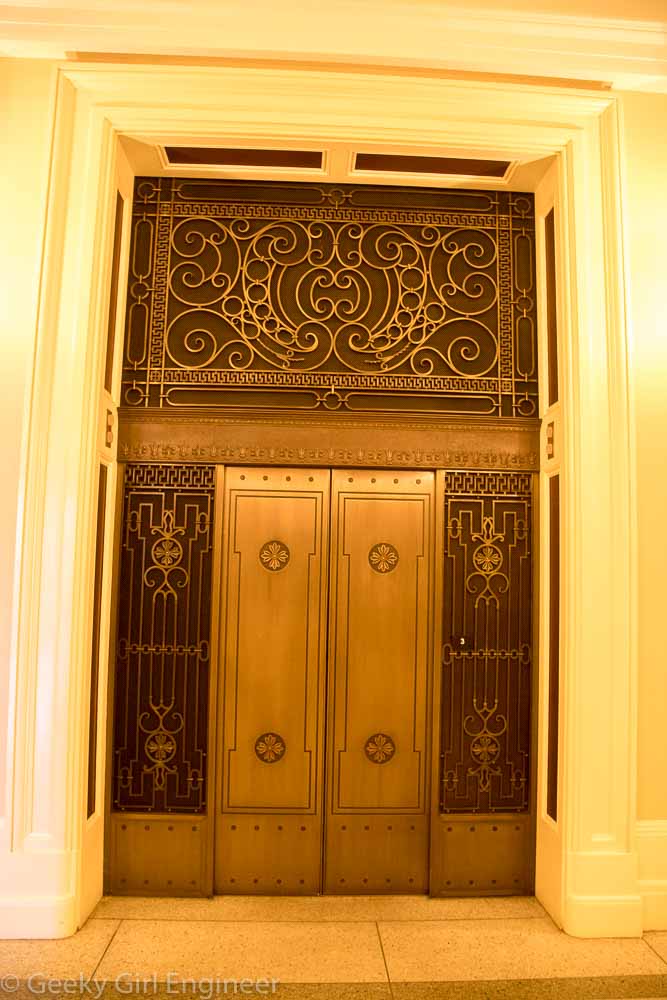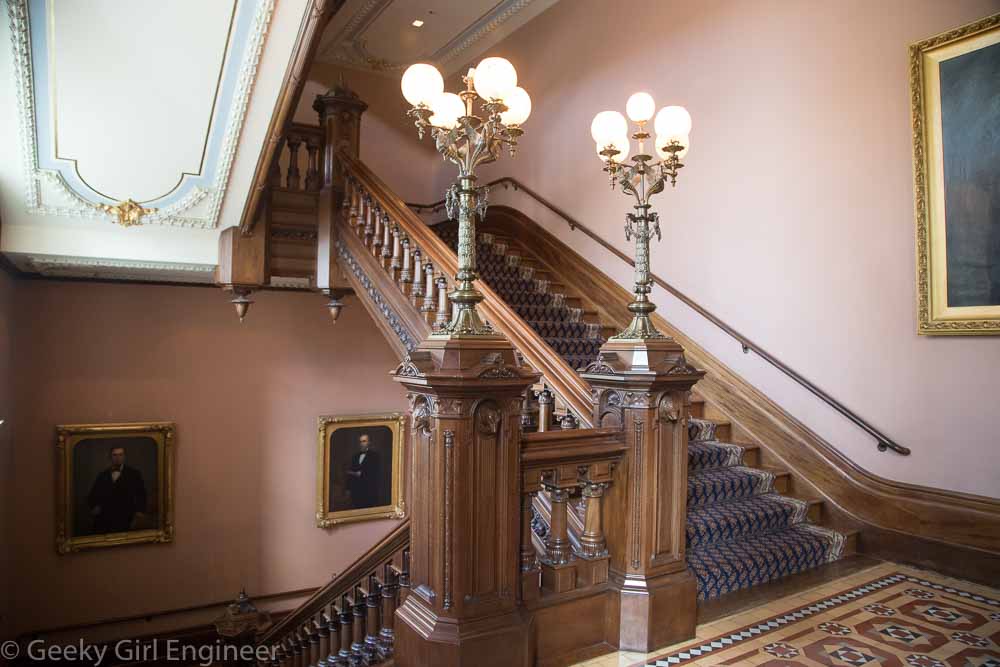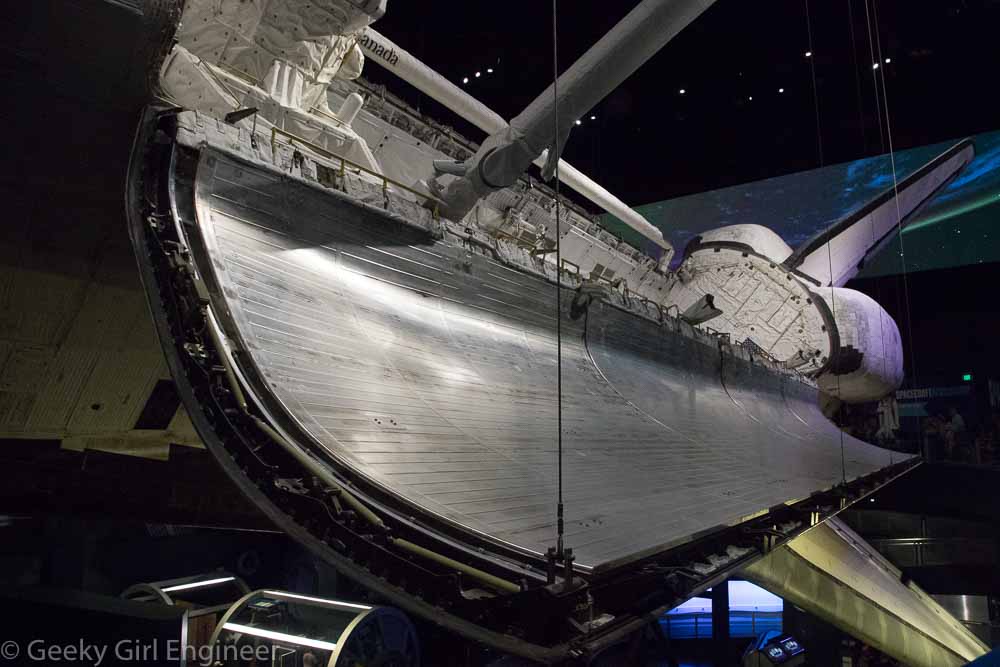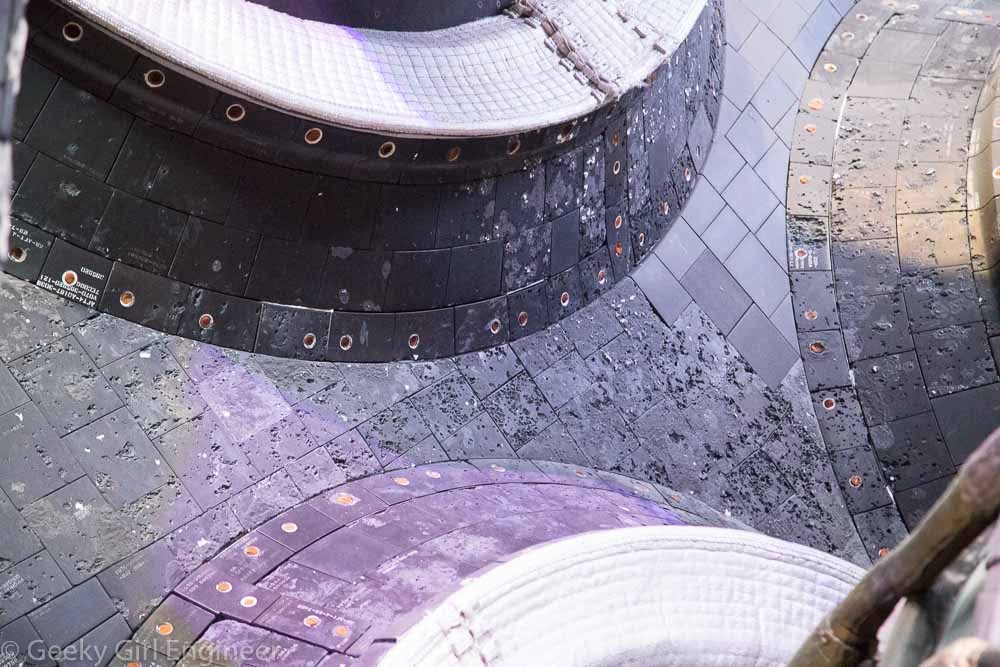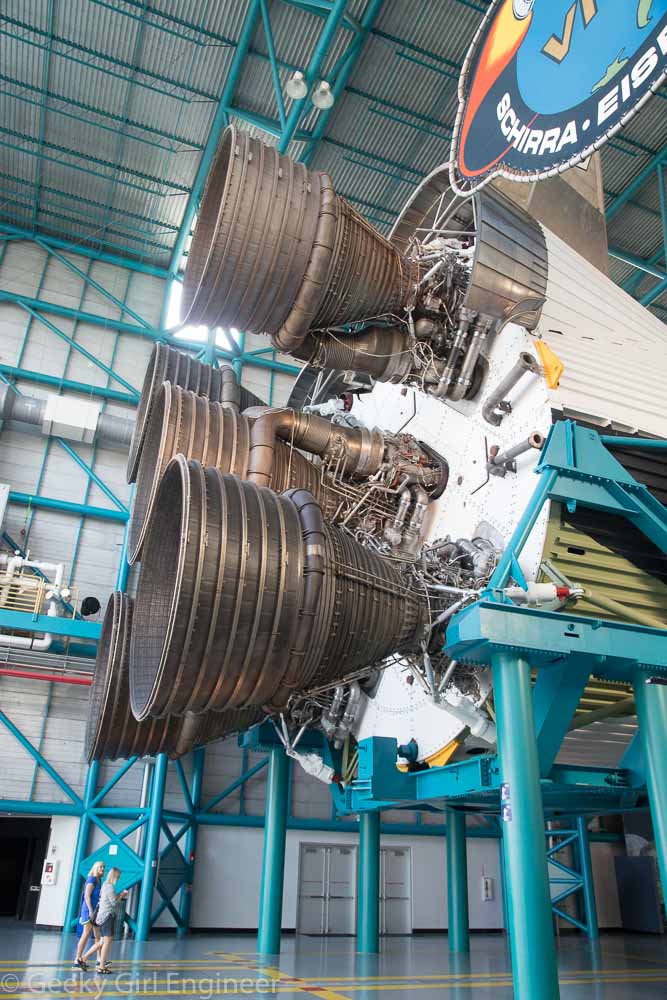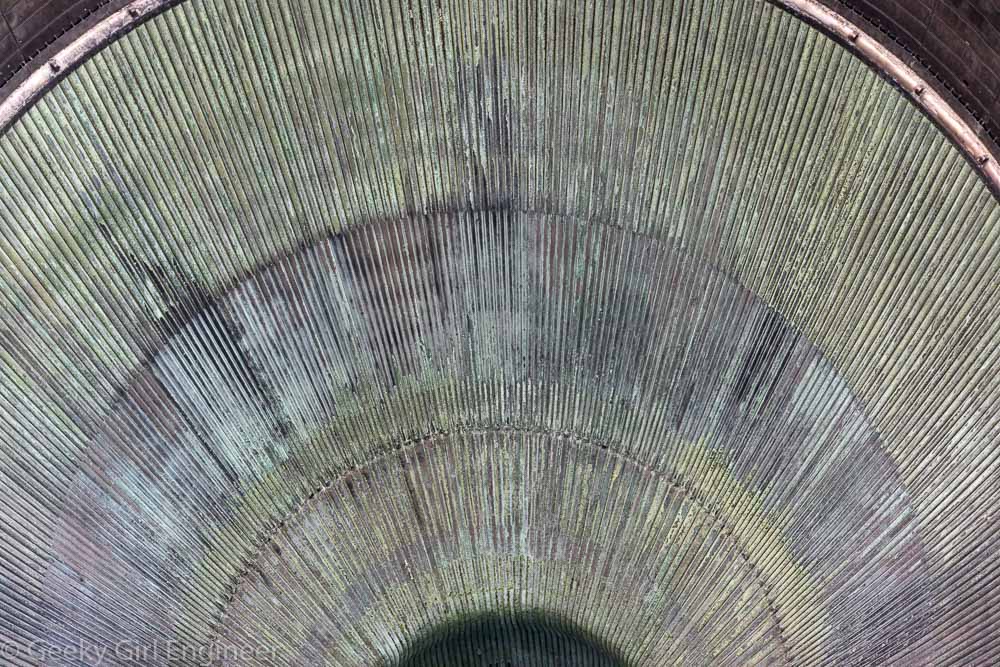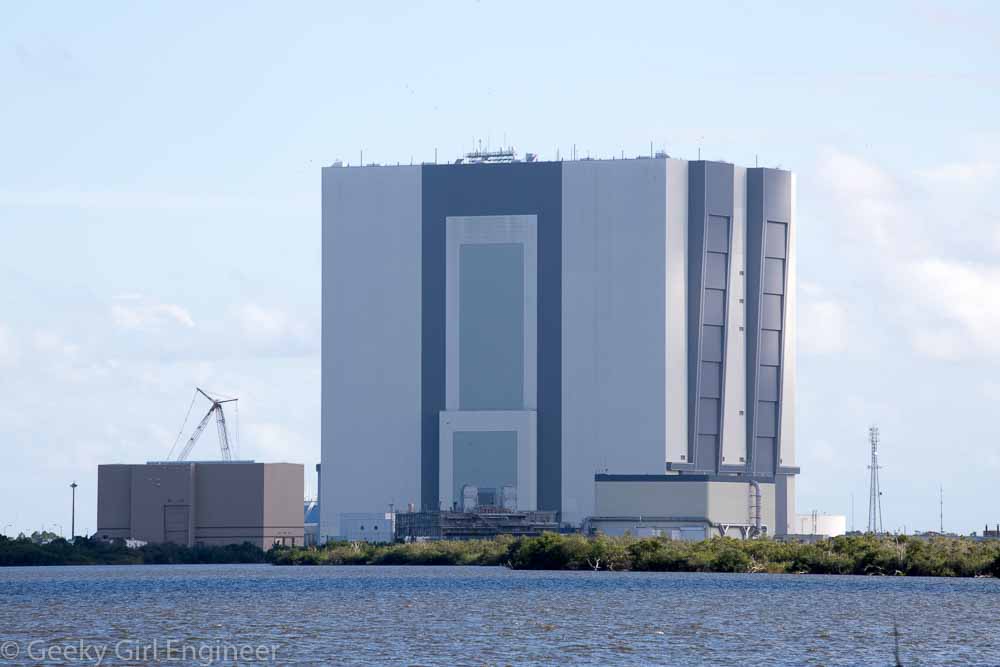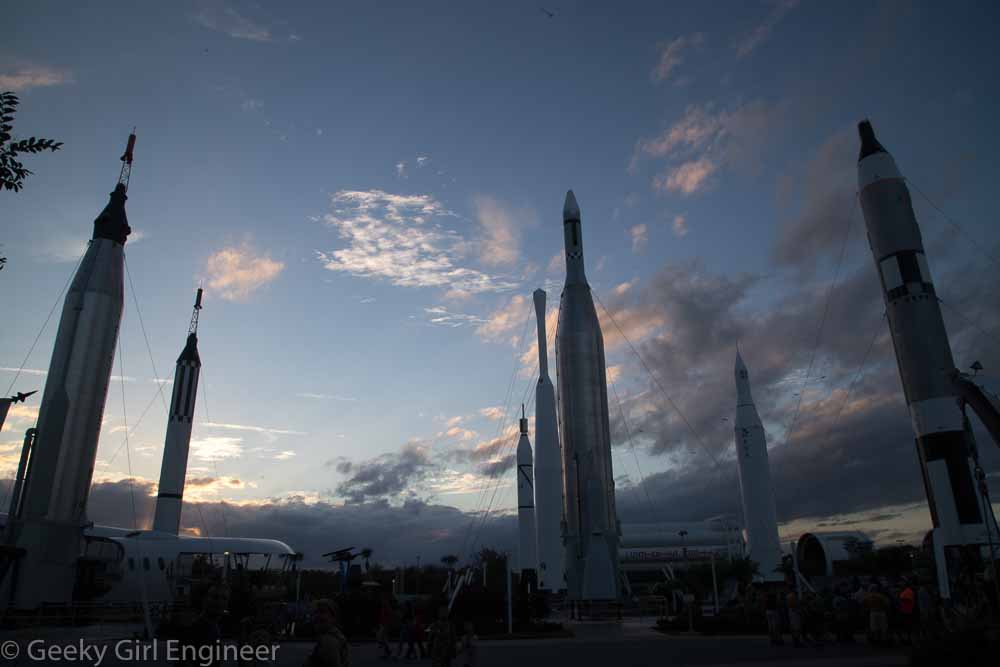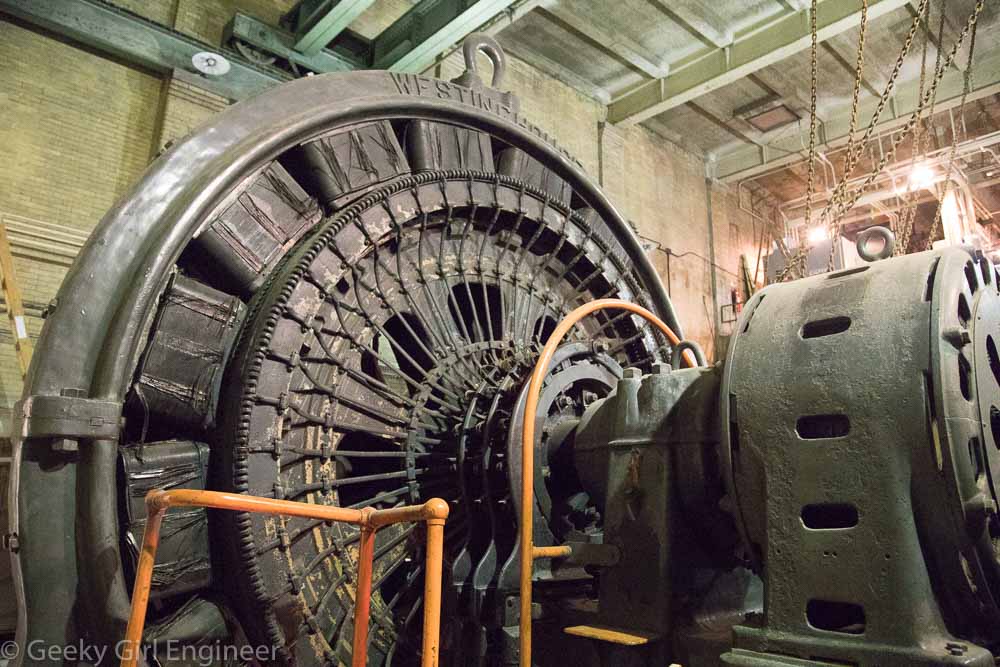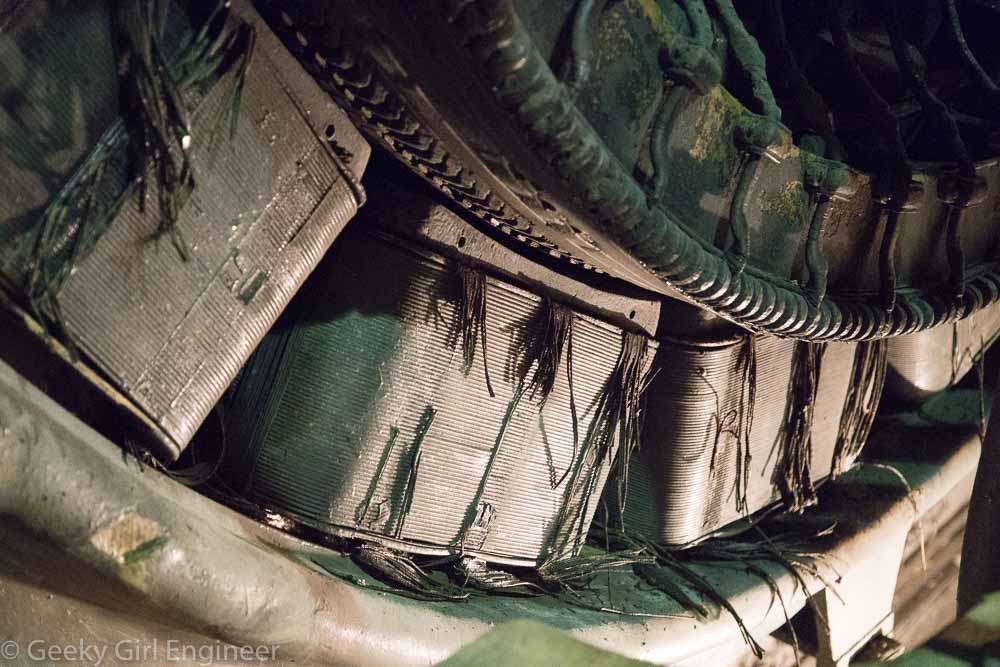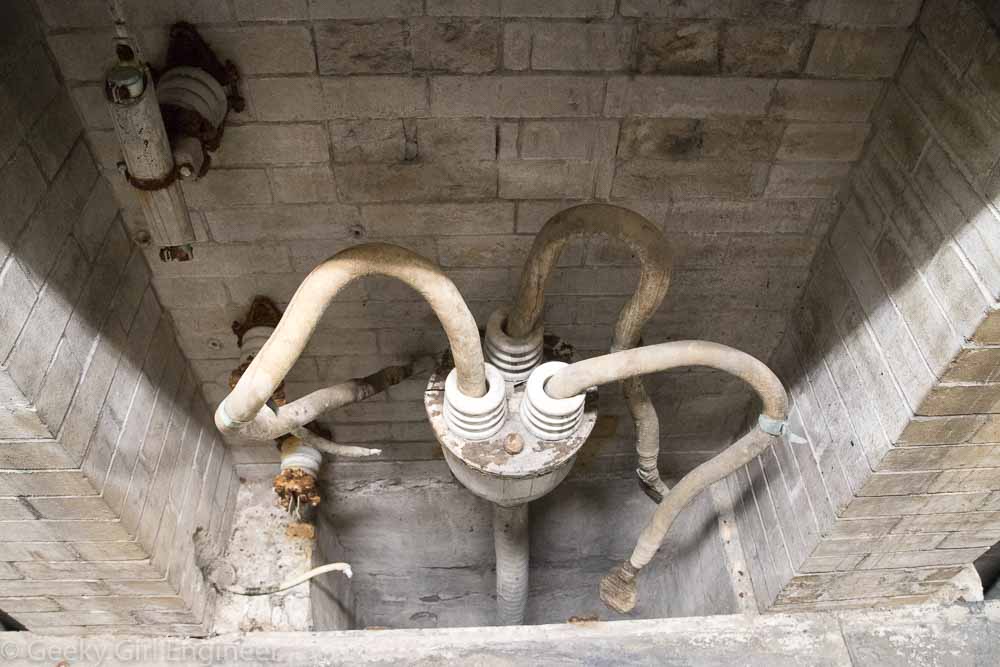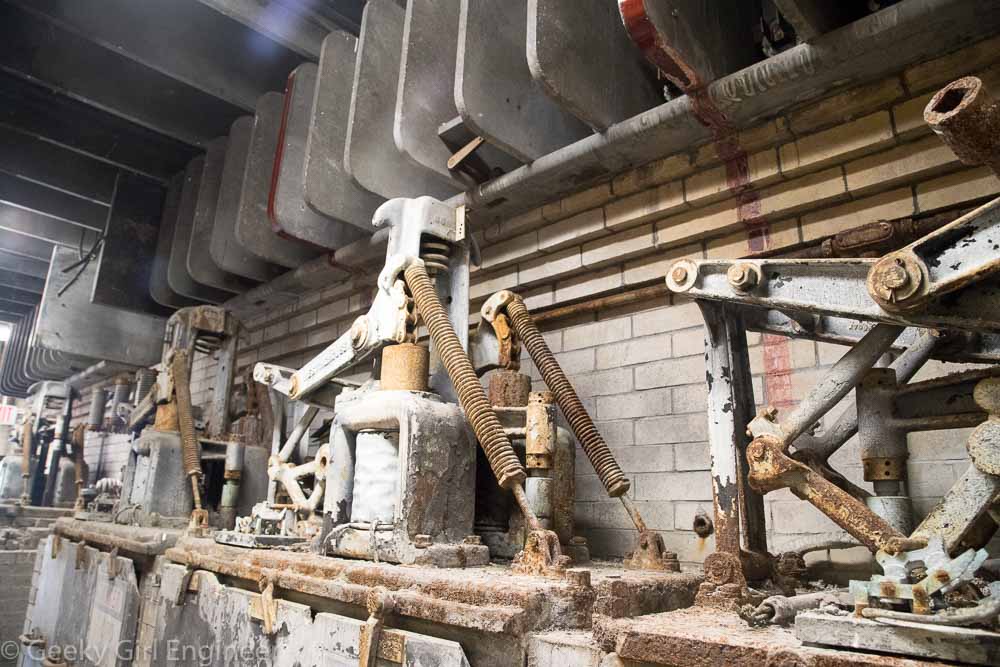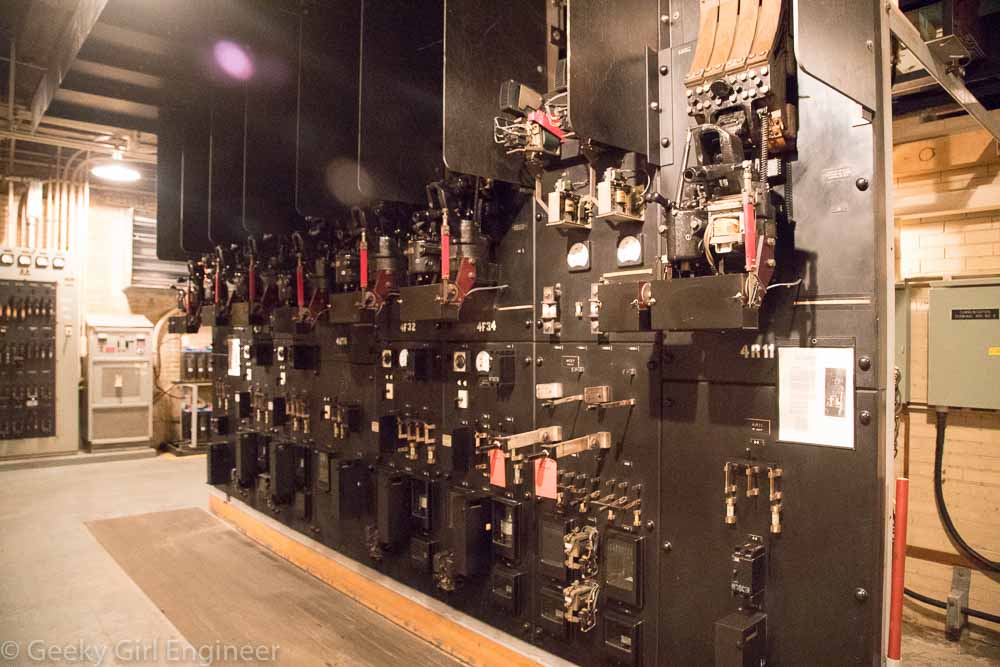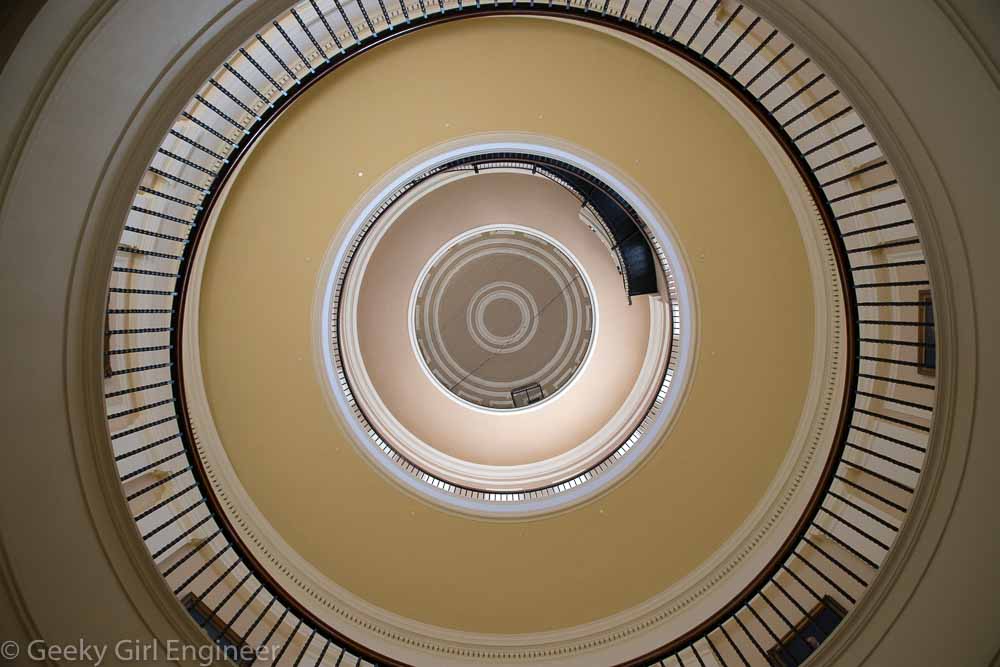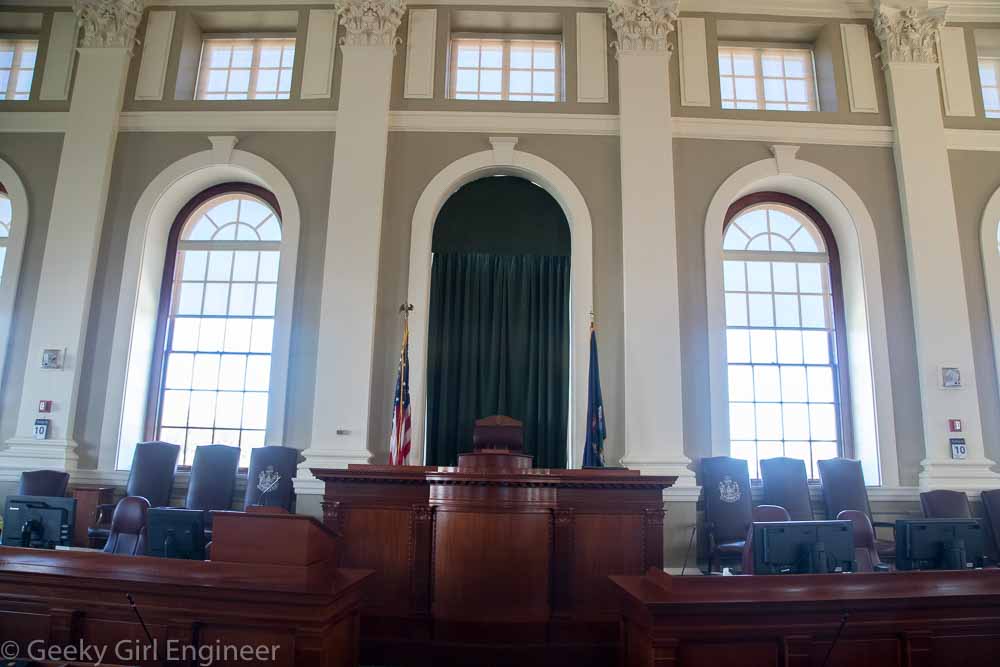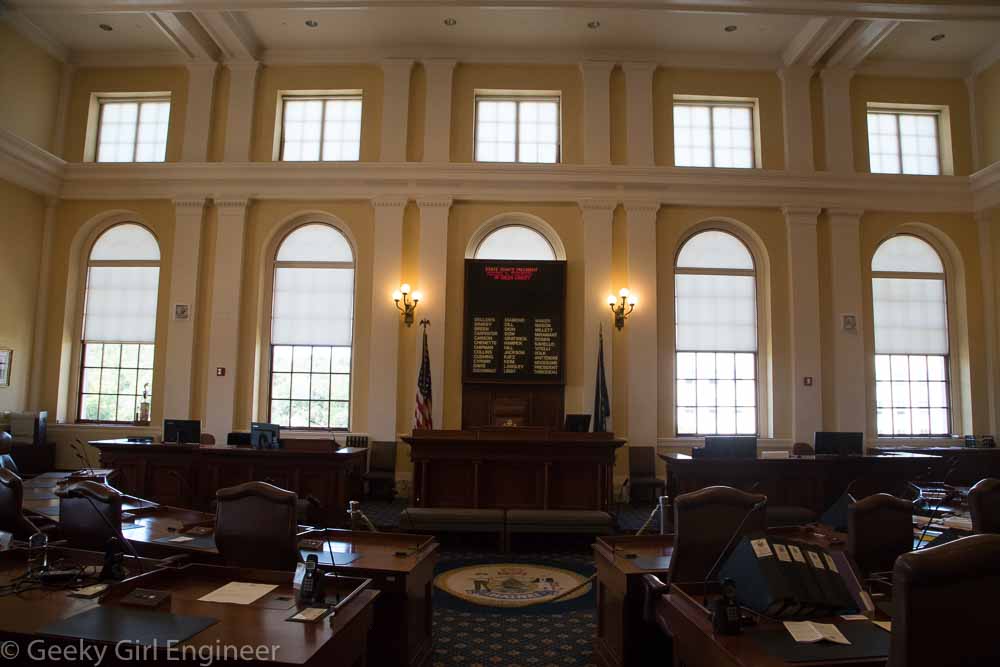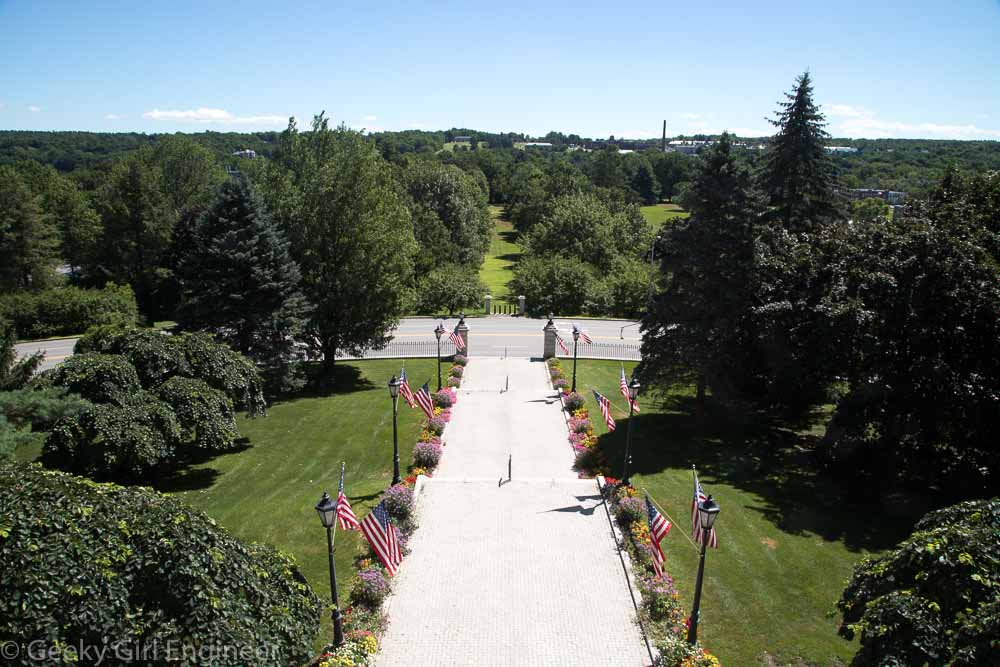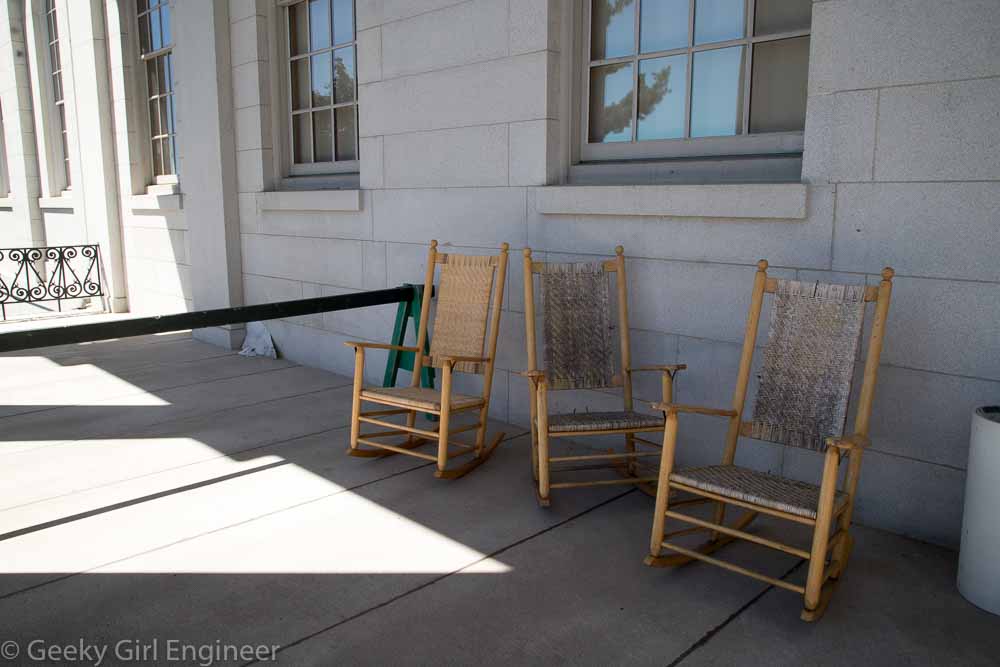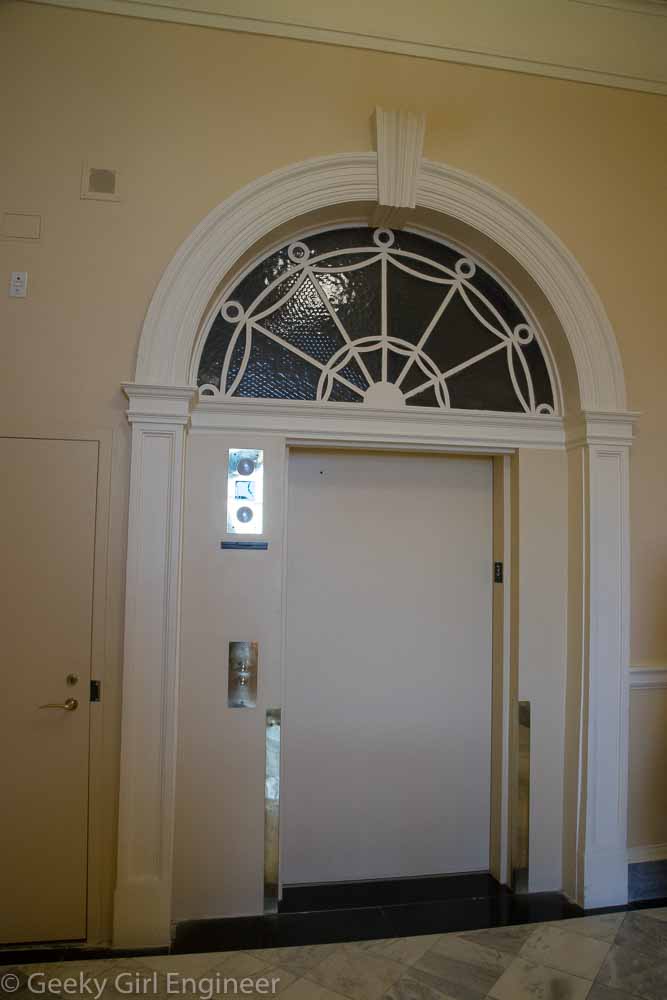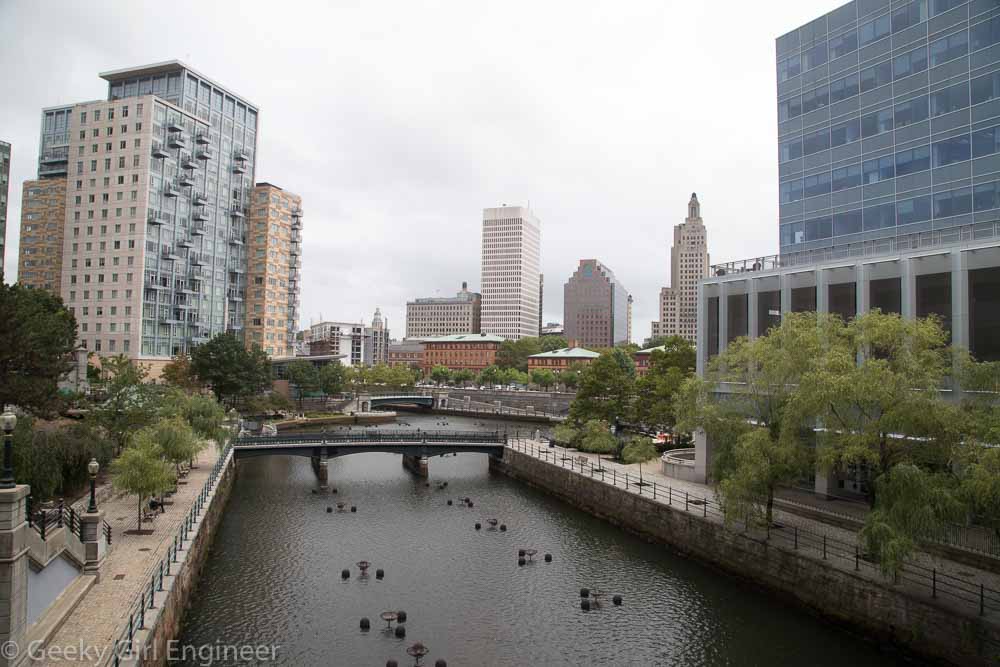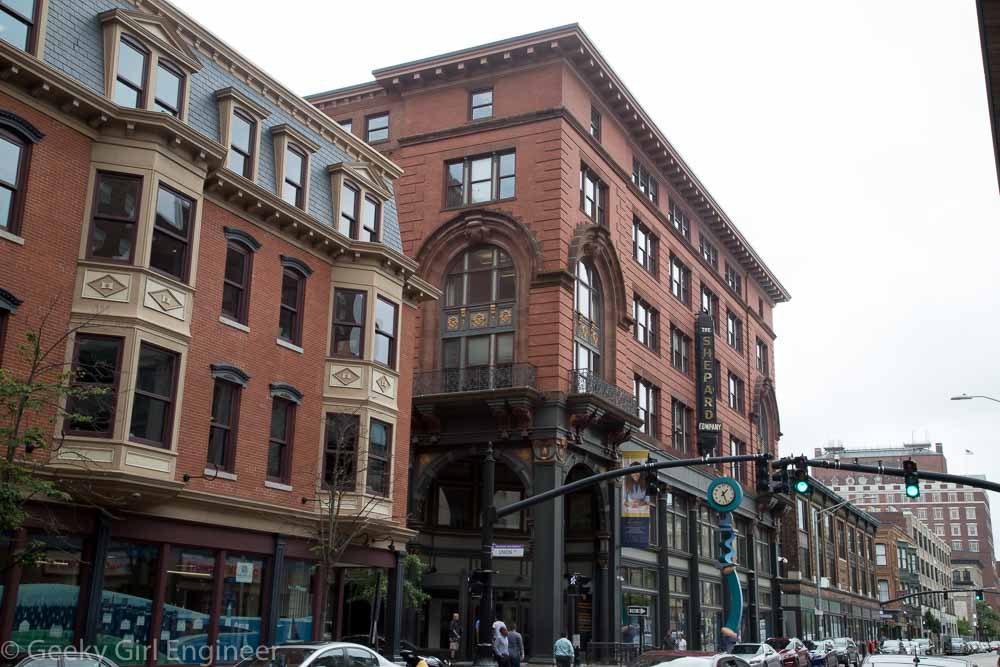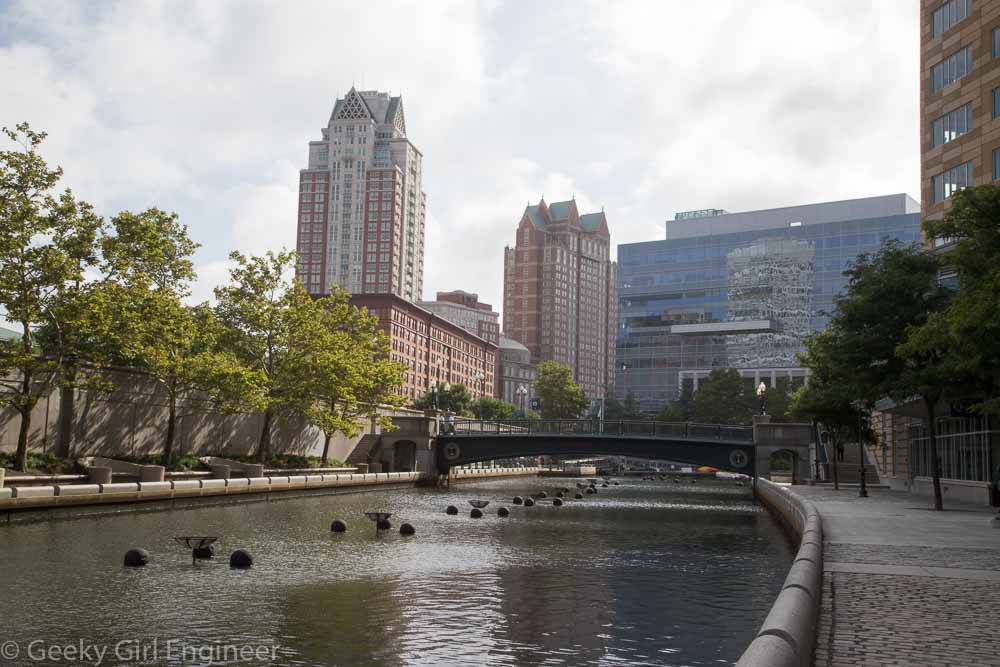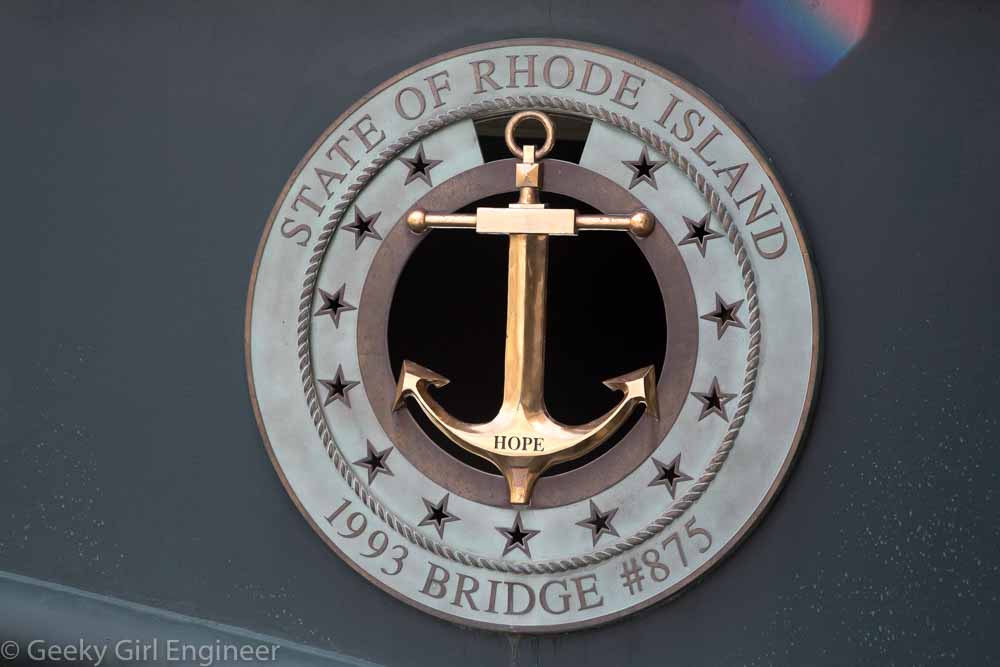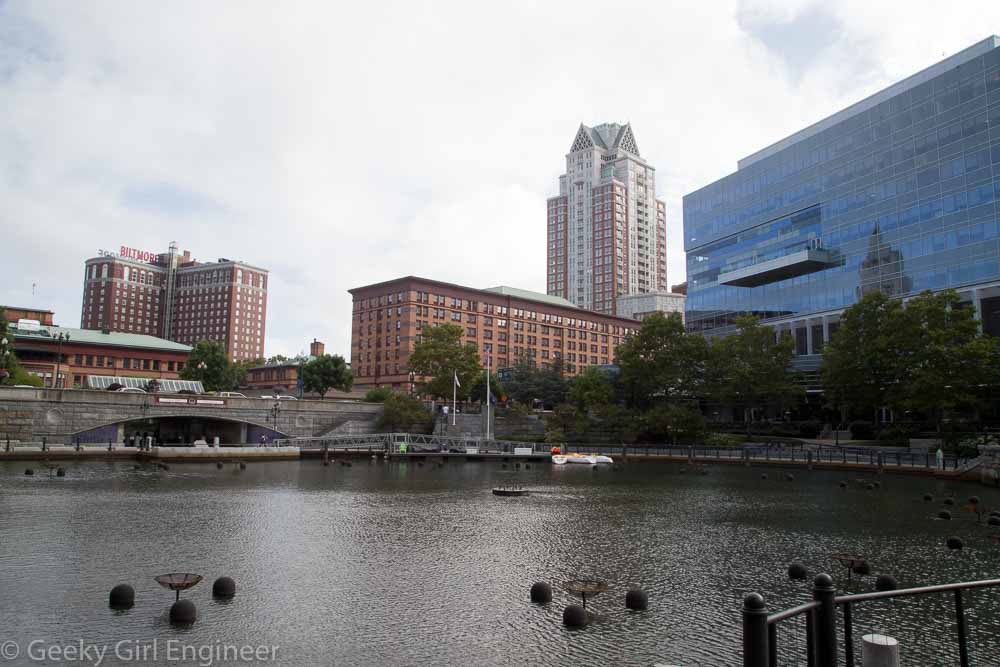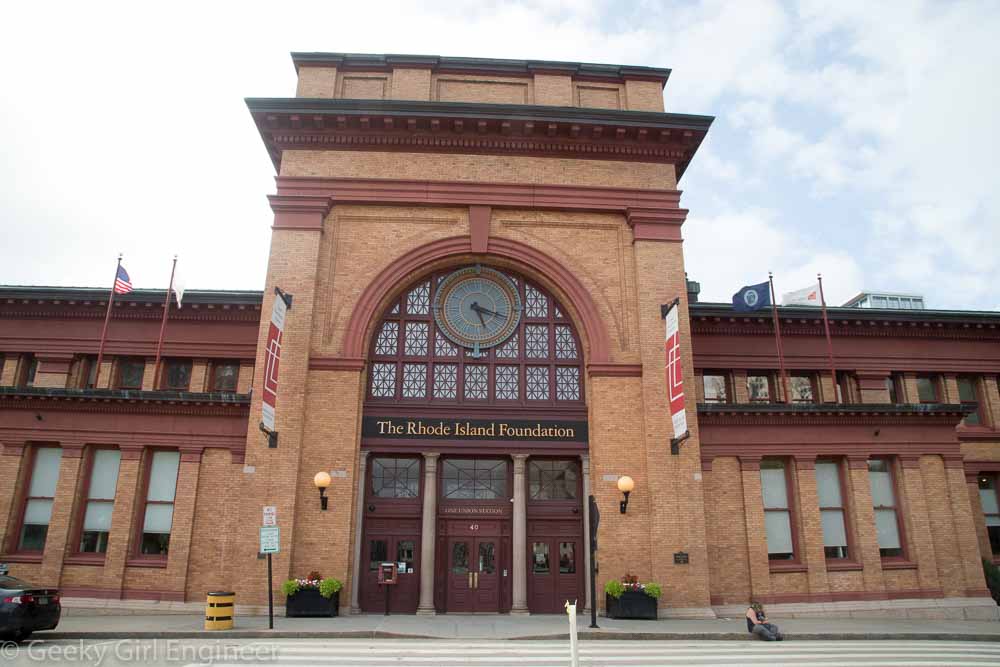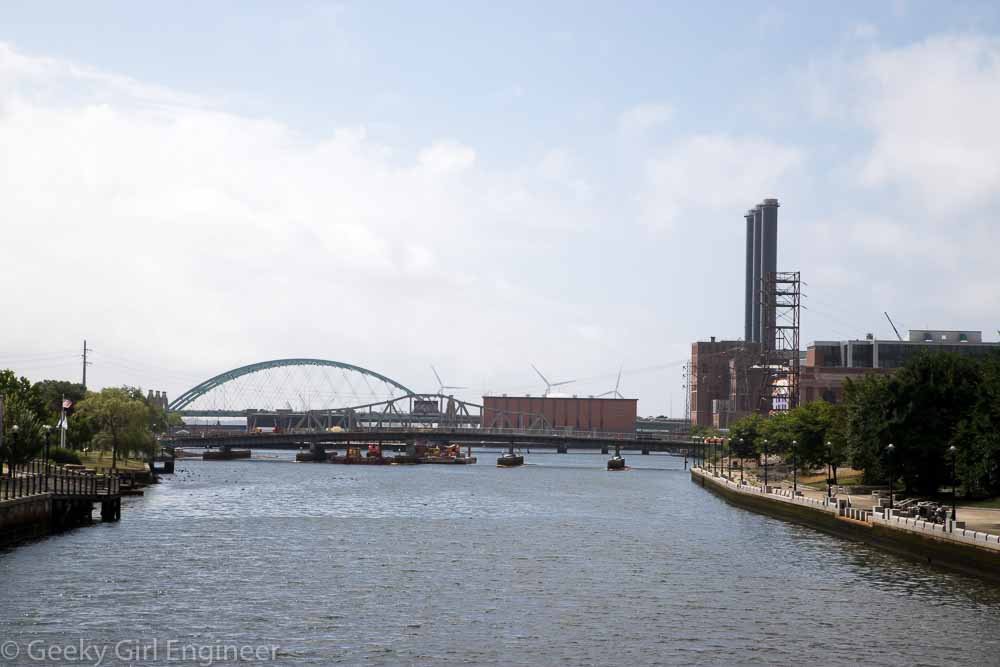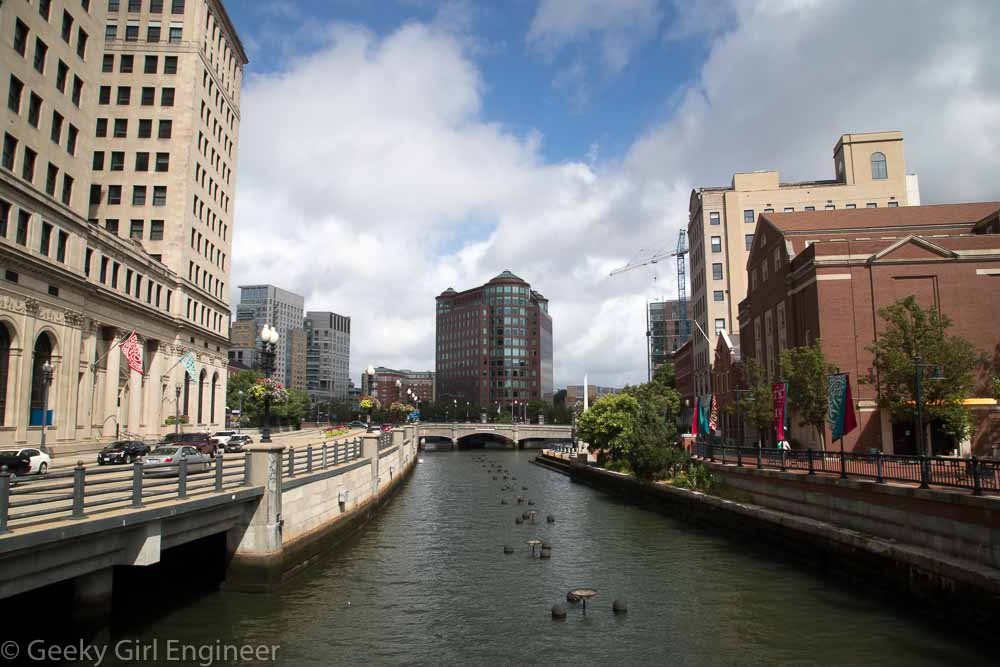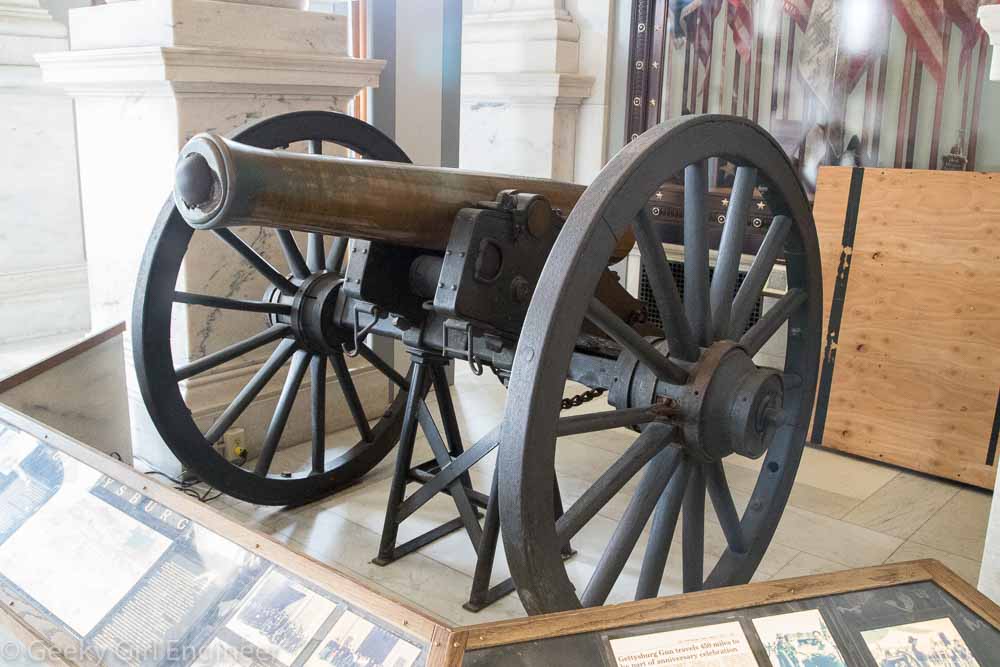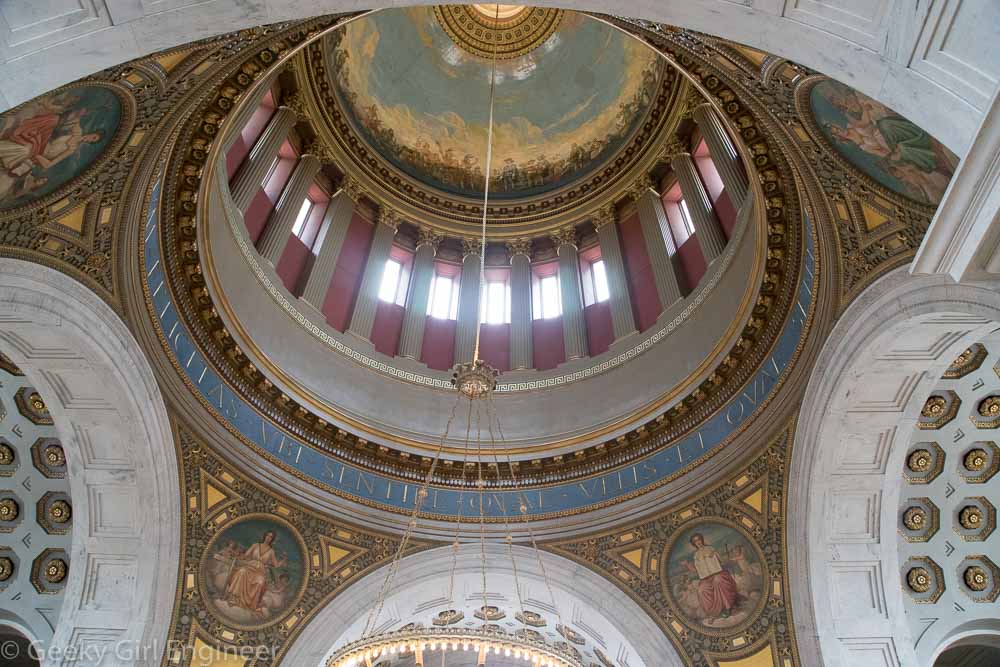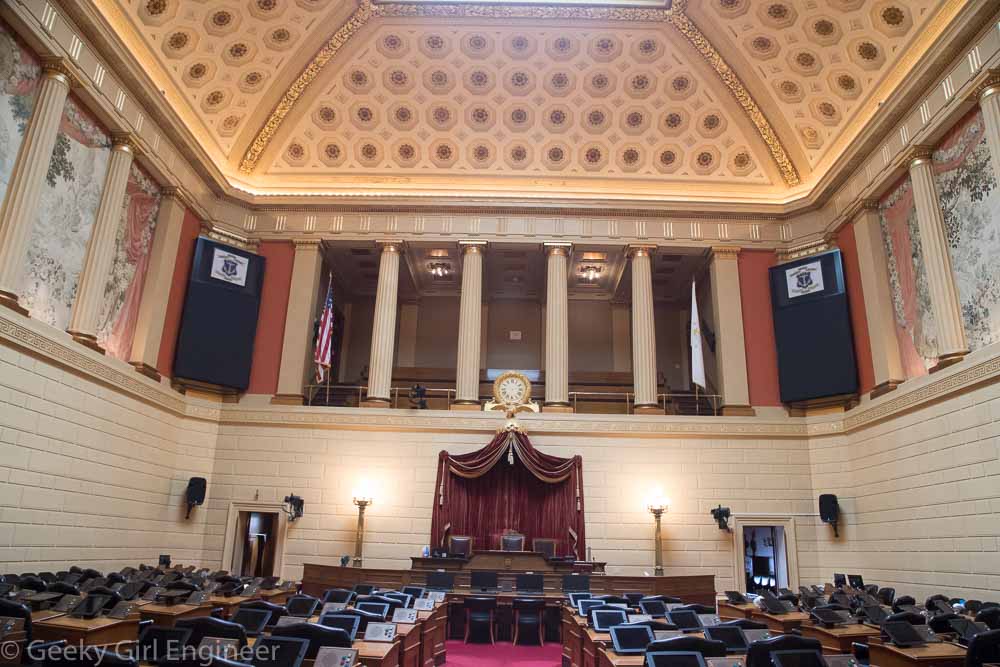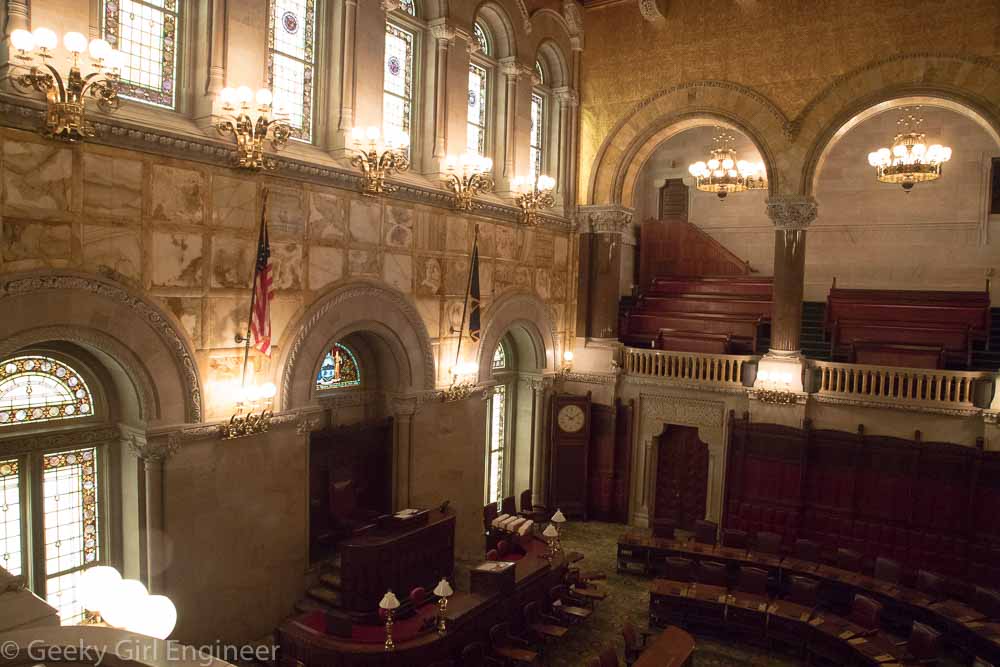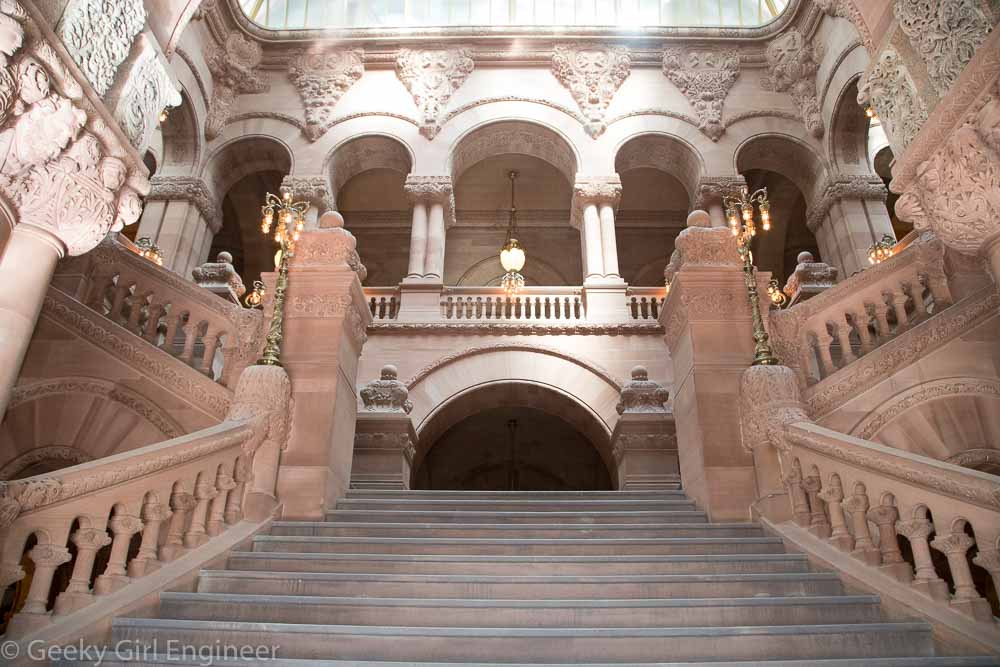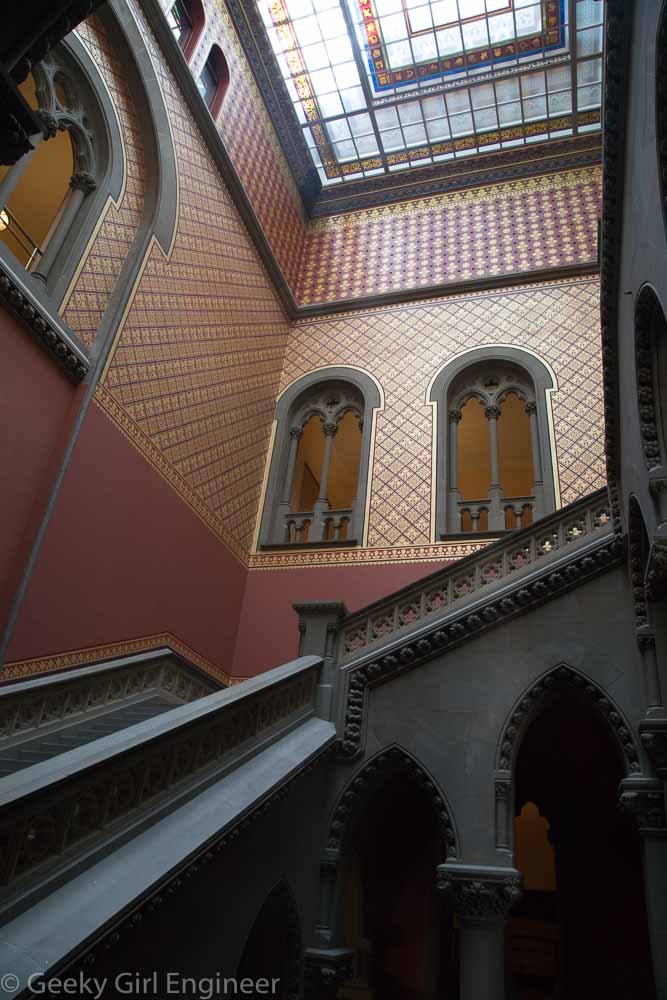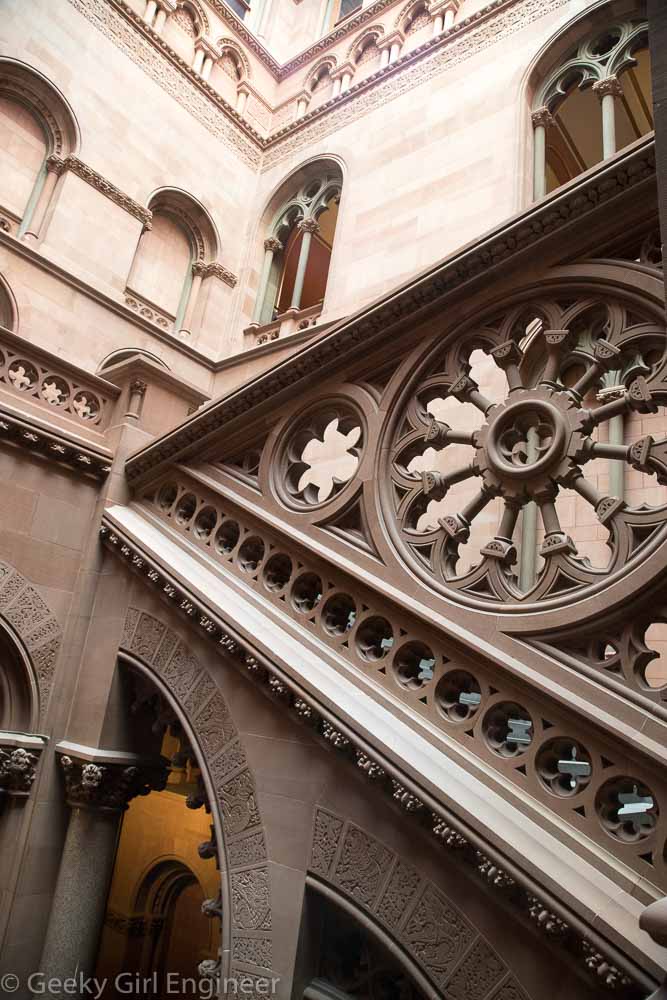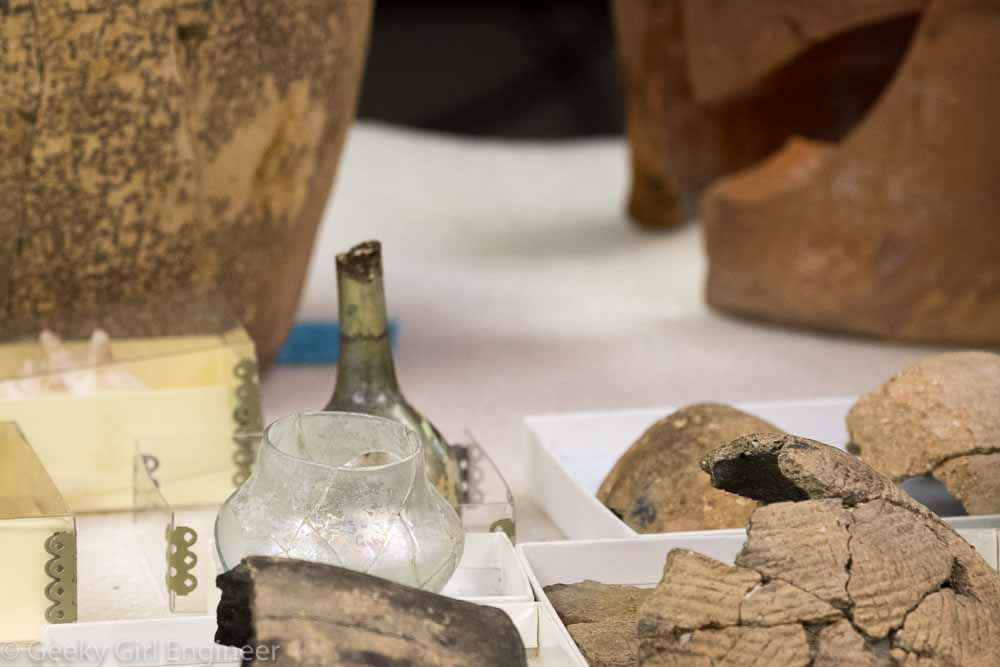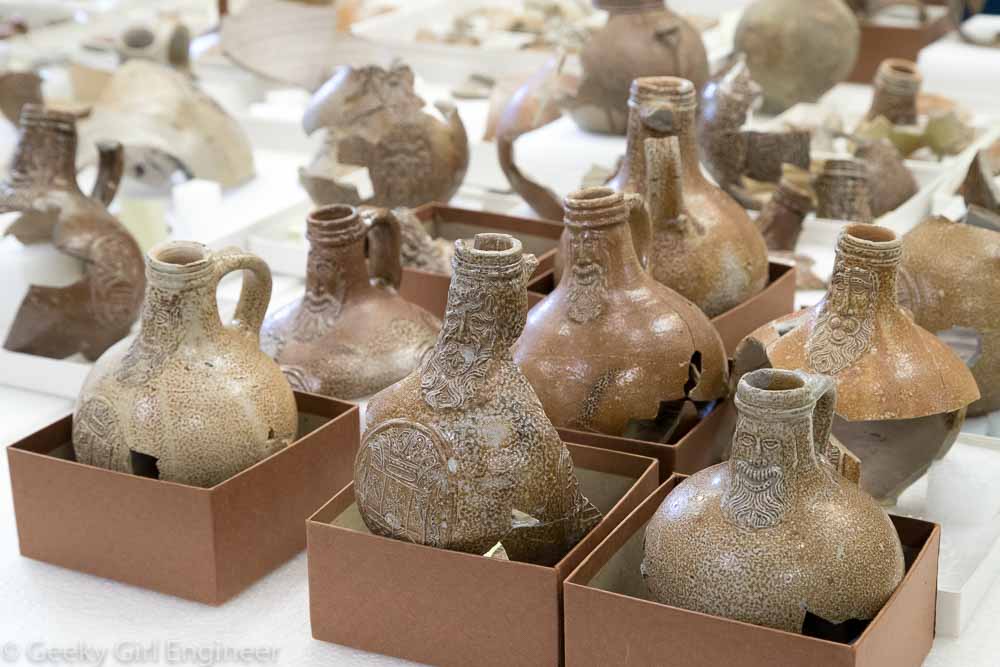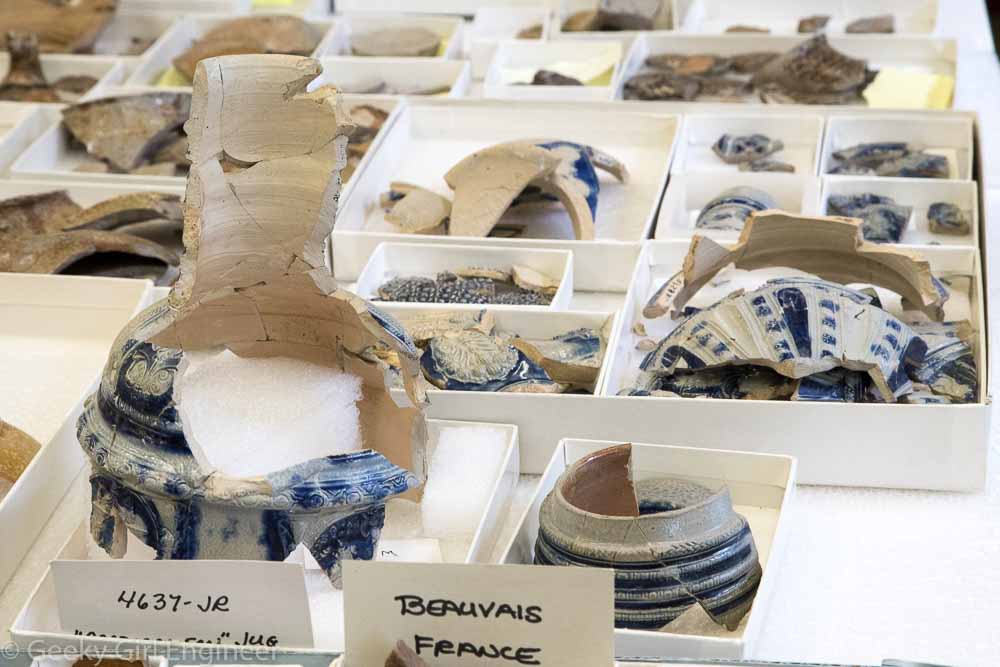Amazingly I lived in Colorado for four years while in college and never once went inside the state capitol. I finally changed that today. Although while taking the tour, I learned that the capitol has been renovated and restored since I was in college, so I was able to see a much nicer looking building than I would have seen back then. The capitol is lovely, and if you are able to visit, take the tour because you can go up into the dome and onto an observation balcony but only on the tour. Similar to capitols, the House of Representatives is decorated in green like the UK House of Commons, while the Senate is decorated in red like the House of Lords. Much of the stone in the building is from quarries in the state, including a gorgeous red onyx. There is a lot of brass that appears to need constant polishing. My favorite feature of the building is Mr. Brown’s Attic, where there are windows to allow you to see much of the superstructure, including vaulted ceiling of the two chambers.
Tag Archives: history
California State Capitol
I am continuing in my quest to visit all the state capitols, and I am in Sacramento this weekend, so I got to add California to my list. The history of the building is rather interesting in that they started building it in 1860, but mainly due to lack of funds, it was not finished for 14 years. In 1906, much modernization was done to the building including electricity and central heat and air. [I was unclear when the indoor plumbing came.] Additions and other renovations were done after that. Some of those renovations sounded like they were more “renovations” that probably sounded good to some at the time, but now most of us at least, and cringe at what was done. Then in 1975, they pretty much completely rebuilt the capitol. The shell of the building stayed, but the interior was completely torn down and built back up again. They did a lovely job of rebuilding. The building is gorgeous with wonderful wooden staircases, gilded and painted ceilings and walls, tile floors, and plenty of little touches you just have to explore to find. The state seal can be found in all sorts of places, and many other symbols are subtly placed around the building. There are bears everywhere, including coming out of staircase railing columns. They also restored several rooms on the first floor to their 1906 appearance, so parts of the capitol are a historical museum.
The senate chamber is decorated with a lot of pink, which is supposed to reflect the color of the United Kingdom’s House of Lords.
The assembly chamber is decorated with a lot of green, which is supposed to reflect the color of the United Kingdom’s House of Commons.
In one of the panels of the assembly’s ceiling, is a grotesque of man’s head and his two hands. It is difficult to see unless you are looking for it, preferably with the help of a tour guide with a laser pointer. It is in a panel with a ring of (what I assume are) prickly pears with yellow flowers. Based on what my tour guide said and my internet searches, it doesn’t seem like the origins and true meaning of the grotesque are clear, but a chubby cheeked man with his hands up in a room where politicians work kind of gives me easy ideas.
Kennedy Space Center
Today was my first visit to the Cape Canaveral area and to the Kennedy Space Center. The big exhibit here is the space shuttle Atlantis. They have it set up really nice, so you can see inside the payload and the damaged external heat shield tiles and blankets. There are plenty of other exhibits to see. Also, you can also take a bus ride to another site to see a Saturn V rocket. The rocket is impressive, and the bus ride is a very short tour of the center and worth the ride.
MTA’s Flatbush-Empire Substation
I took another tour with New York Transit Museum today. This one of the Flatbush-Empire Substation, formally known as Old Prospect Park Substation. It was constructed in the early 1900s to originally provide power for Brooklyn trolleys and then was used to provide power to the subways. Sadly, the substation sits right above where the Malbone Street disaster occurred, where approximately 100 people lost their lives in 1918 when an untrained conductor was operating a subway train during a labor dispute. The substation played a role in the disaster when the circuit breakers tripped at the station from the train accident, and the substation operator restored power to the rail thereby electrocuting any victims on the tracks because the system operators thought the breakers had tripped due to a prank by strikers.
The substation originally converted AC power from the grid to DC using rotary convertors. Now they use modern thingamajigs that are not nearly so cool looking. The downstairs of the substation has all the old unused parts, not to mention all the hazardous chemicals that had to be removed. There are capacitors where PCBs had clearly been removed, and other places painted with a white sealant after asbestos had been removed. Upstairs is where the boring gray boxes filled with modern electronics that actually do the work now are. The substation does not have a working rotary convertor by the way. The only one left owned by MTA is at Substation #13 (see that post for photos and video).
Maine State Capitol
I’m continuing my quest to see all the state capitol buildings. I am in Maine, so I detoured through Augusta to add Maine to the list. Maine’s state house is one of the least opulent I have seen. The tour guide even mentioned that it was not gilded, as that is not Maine’s way, and they were also not given the budget for it. Thus, there is lovely architecture and some marble tile floors, but no gold leaf, marble columns, or bronze this or that everywhere. There is a complete lack of painted murals. The building has clearly been renovated, but in a respectful manner to the original architecture. My favorite feature of the building is the second floor balcony which looks out to a large park and has rocking chairs on it.
Providence, Rhode Island
When I travel to a new city, I like to just wander around taking photos. I am in Providence, so that is what I did. Providence is like a lot of old U.S. cities with old historic buildings mixed in with new buildings. I like old cities that preserve at least some of those old buildings. Providence has done that. It also has lots of river walk type areas, which makes for pleasant wandering.
Gettysburg Gun
Right past security at the entrance to the Rhode Island State Capitol, is the Gettysburg Gun. This cannon was used by Battery B of the 1st Rhode Island Light Artillery as they fought for the Union at Gettysburg in 1863. During the battle, members of the artillery was attempting to reload the cannon when it was struck by a Confederate shell. You can clearly see the dent on the left side of the bore. Two members of the artillery were killed, and other members attempted to keep reloading the gun, but the shell had compressed the mouth enough that the ball would not fully go in the gun. The men tried hammering the ball in, but the gun was hot from being fired numerous times and from being struck. Thus the gun was starting to cool after not being fired for several minutes, and the ball became permanently lodged in the mouth. It probably somewhat melted into place.
The gun became somewhat famous and a remembrance of the battle. It was put on display in Washington then in Rhode Island. It sat at the entrance to the Rhode Island Capitol for decades. Now here is the part I find most fascinating. It was not until 1962 that it dawned on people that the gun powder is loaded into a gun of this type BEFORE the ball is loaded. The ball got stuck while they were trying to load it. Hence in 1962 it finally occurred to some people that there was probably gun powder sitting in the barrel. Very old gun powder. Probably very unstable, old gun powder. Naval ordnance personnel and Rhode Island Army National Guard temporarily took the gun away. They put it into a pool and drilled two holes into it. You can see at least one of the holes on the front. It looks like two, but I am not positive if both are the drilled holes. Sure enough, there was gun powder in there. They flushed out two pounds of gun powder. They left the barrel flooded with water to disarm any residue gun powder before returning it to the capitol.
Our tour guide said the moral of the story is never stop asking questions. This gun was rendered safe because some nameless person asked questions and possibly prevented a horrible incident. I think one of the morals is assume all weapons are loaded. In my line of work as an environmental engineer, when I go to a site, I assume the site is contaminated until proven otherwise. When it comes to safety, plan for the worst, hope for the best. Even if that means a 100 year old weapon.
Rhode Island State Capitol
I visited the Rhode Island State Capitol today. One of my many travel goals is to visit all the state capitols. Like most states, Rhode Island has a lovely state capitol. I learned quite a bit on the tour I took. First trivia I learned is the official name of Rhode Island is actually the State of Rhode Island and Providence Plantations. Tiny state. Big name. Second thing I learned was that the present capitol was finished in 1904. There were several state houses before that, and for some time, the state legislature had no house and met sometimes in people’s houses. I can’t imagine having the entire house of representatives meet in an actual person’s house.
I digress. The capitol is beautiful and for the most part what you expect. It has the 5th largest marble dome in the world. [More trivia for you.] Lots of marble, brass, and painting. Not the fanciest one I have seen. It has lots of anchors to compete with Massachusetts’s fish everywhere. However, Rhode Island definitely wins bonus points for the motto in the women’s restroom. Photo below. I have no idea what is in the men’s restroom.
Finally see my next post. They have a cannon from Gettysburg at the entrance, and there is a really great story about it. So great, I am going to give it its own post.
New York State Capitol
I spent the day wandering around Albany today, and I started the day off with a tour of the Capitol. The New York Capitol is gorgeous. According to the tour guide, it was way over budget and way behind schedule when then Governor Teddy Roosevelt finally said, it’s done, no more. The guide pointed out some stone that was never carved because of that. The stone work is amazing none the less. There are numerous different stones used, and it is all exquisite.
From the outside, the building is beautiful, even without the domed tower it was supposed to have. I lost count of how many different architects the building had, but the style of the building is different in various areas because of that.
The Senate Chamber is gorgeous with gold paneling and beautiful marble tiles on the walls. My favorite part of it is that the chamber has two fireplaces that haven’t been used in decades since the building got central heat and air. Because of the acoustics in the chamber, it is hard to have a private conversation, so the two fireplaces are called “whispering fireplaces” where senators can have private conversation. They even keep folding chairs in the fireplaces for this activity. I find this hilarious. Even better, I noticed a fire extinguisher next to one of the fireplaces. Is it for heated political arguments?
The Assembly Chamber is not as exquisite as the Senate Chamber, but it is pretty also. According to the guide, the current ceiling in the room is the third one. The first one kept cracking and falling apart to the degree that large stones fell onto the ground. Then the second version was mainly papier-mache and wood. It was supposed to be solid wood, but such bad, vague specifications were written into the contract that the builder substituted papier-mache. At some point after this when the legislatures discovered this they sued, but they lost in court because the specifications were so bad. There is a lesson to be learned there. The paper-mache ended up saving the room during a fire in 1911. This is now the third ceiling, (I wasn’t clear on this) built after the fire.
The hallways and the staircases are some of the most beautiful areas of the building. The Great Western staircase is so beautiful that my photos cannot do it justice.
Jamestown Artifacts
My tour of Jamestown included a behind the scenes tour of the vault, where they keep many of the archeological finds and the laboratory where they process the finds. In the lab, our guide showed us how where they clean and dry the samples. She also explained how all the finds are identified and coded. My favorite part was her describing how they identify, collect, and store all artifacts found at the site, including potato chip bags, CDs, and USB drives. I suppose technically CDs are becoming historical objects.
The vault contains wonderful artifacts, and they are very clear to explain that the artifacts all represent historical trash. Essentially everything they have was found in a historical Jamestown trash hole. Many of the trash holes were water wells that became contaminated with salt water, so they just threw their trash in it for archeologists to dig up and treasure hundreds of years later. [Consider that next time you litter.] They have collected lots of bones from various wild and domesticated animals, pottery, glass, and metal objects. They have many old building material artifacts also. The collection is just amazing. What is even more amazing is what people throw away. Some things never change.

